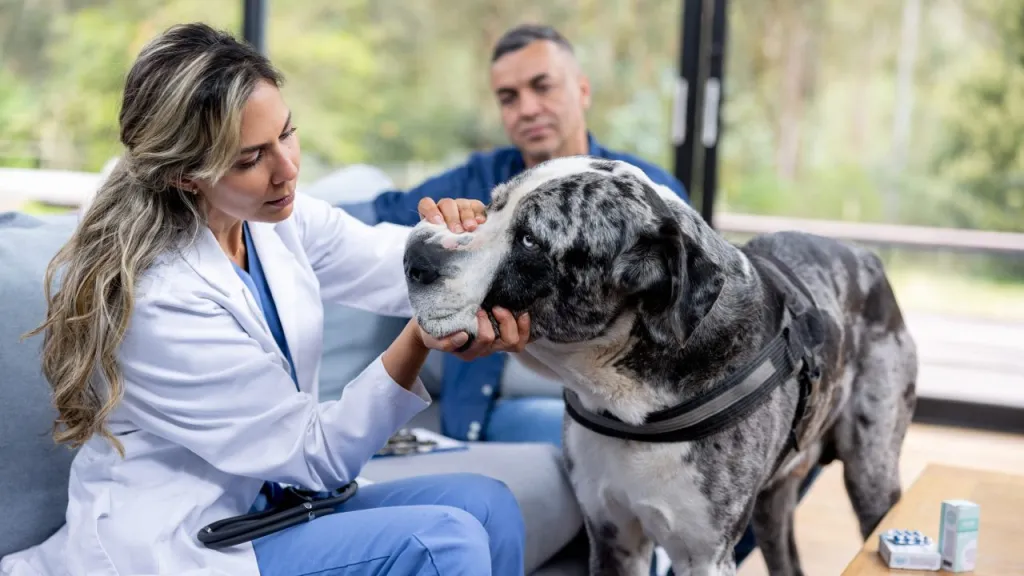

Are Veterinary Home Visits Right for Your Dog?
By Jessica Desrosiers
Veterinary care is an important part of your dog’s life. Routine care can prevent illnesses, catch serious problems early, and keep your dog safe and healthy. However, traveling to a veterinary clinic can cause a lot of extra stress for both you and your dog. Veterinary home and virtual visits are alternatives growing in popularity that may help. Here’s everything you need to know to determine if a veterinary home visit is right for your dog.
What are veterinary home visits and virtual visits?
A home visit is when a veterinarian travels to your home to examine and care for your pet. This can be done in several ways, including direct visits inside your home or via a mobile clinic parked in your driveway. Your vet will bring with them any needed supplies to perform exams, basic procedures, and routine care.
Advertisement
Virtual visits are completely online visits, occurring either through email, webcam, or web chats. While these aren’t actual exams, they can help bridge the gap in veterinary care by answering questions about routine care, triage, and medications. Virtual visits can also be used to refill prescription medications or to check up on a recovering pet without having to bring them into the clinic again.
Are home visits right for my dog?
Veterinary home visits are great for many reasons. If you have a shy or nervous dog that is easily stressed, a home visit can reduce that anxiety by allowing your dog to stay in a familiar place. This may also make it easier for you to administer anxiety meds or sedatives and monitor your dog in a home environment before the vet arrives.
Home visits are also great for people with disabilities or who may not be able to leave the home. It can reduce the stress of finding a ride or having a nervous dog on public transportation. In addition, chronic conditions such as subcutaneous fluids used to treat kidney disease or laser therapies for arthritis can be managed more easily without having to travel to the clinic several times per week.
How to find a home visit or virtual visit veterinarian
Many veterinary clinics are starting to add home visit or virtual visit options to their established practice. If you already have a vet, it’s a good idea to contact them first to see what services they offer. They may be able to provide virtual services through an app. These can offer medication refills, reminders, or rechecks. Your vet may also offer basic at-home services.
If your vet doesn’t offer these options, looking at local listings of home care or mobile vets is a great next step. Be sure to thoroughly check what services they offer. Some vets only offer basics such as examinations and vaccinations. Others may have a wider variety of options including basic surgical procedures. It’s also important to call and ask questions about licensing, business practices, and treatment options to ensure your dog gets safe and appropriate care.
While still in its infancy, veterinary home visits and virtual visits are a great alternative for nervous or anxious pets. If you’re looking for more information about veterinary services, check out our complete guide to vet visit costs for dog owners. And, be sure to check out the top five steps to take when choosing a vet .
Jessica has over 18 years of experience in the pet industry. She started out as a certified dog trainer at the age of 17, and went on to work as a veterinary technician and animal shelter behavior volunteer while completing her degree in Animal Sciences. Now, Jessica spends her time writing about pet-related topics and helping pets and their parents.
Share article

Pros and Cons of a Cavapoo

10 Fun, Impressive Dog Tricks You Can Teach Any Dog

Finding a Good Dog Breeder

4 Reasons Your Dog’s Tongue Sticks Out

What Are the Dog Breeds of the Paw Patrol Characters?

See the Most Googled Dog Questions (And Their Answers) Here

Presa Canario vs. Cane Corso Dog Breeds
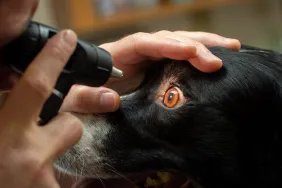
Retinal Dysplasia in Dogs: Symptoms, Causes, & Treatments

Portosystemic Shunt in Dogs: Symptoms, Causes, & Treatments
- Account Settings
- Bird Breeds
- Fish Breeds
- Horse Breeds
- Rabbit Breeds
- Turtle Breeds
- Dog Insurance
- Tips and Advice
- Dog Products
- Cat Products
- Fish Products
Top stories

- Dog Care & Services
The Home Visit: An Essential Part Of Adopting A Dog

“Hello! I am here for your home visit!” If you’re adopting a dog, you might be greeted by these words from a stranger at your door. Not to worry, he’s not here to sell you anything – this is a home visit and it’s an increasingly common part of pet rescues adoption procedure.
In fact, I may end up on your door step because I do home visits for a local dog rescue. This is my favorite part of volunteering. I love to meet people and feel so special to be part of the final step in a dog’s journey to finding a new home.
Related: Adventures In Fostering: Meet Francis
I understand that people may be nervous about a home visit. Relax – I’m not there to judge your home décor color scheme (but since we’re on the subject… do you think that flashing beer sign goes with the couch?) or make sure you’ve dusted everything with a flat surface. This home visit is to ensure that this adoption is going to be successful. The best way to do this is by having an in-house conversation, as well as a pair of trained eyes that will help you eliminate any potential problems around your house and yard.
Related: A Day In The Life Of Dog Foster Dad
I’ll want to know if you have a vet you’re using. It’s best to have a vet set up before you bring your dog home, rather than rushing to find one in case of an emergency.
Have you ever taken an obedience classes before, and what activities you are looking to do with your dog? What’s your daily routine and how you will include the dog in this? This includes where the dog will eat, sleep, be trained and exercised.
I’m not here to tell you how to do it; I am here to get you to think about it. Some families have a bed already in place and bowls out for meal time. Others are looking for guidance, and we will discuss options and possibilities that will work for you.
What am I looking for?
In general, I am looking to see that the home is safe for the dog. If you have a fenced yard, I will inspect it with fresh eyes for any possible escape routes. Maybe your gate is sagging, or you have a stack of firewood piled against the back corner, which a dog might use as a ladder and escape the yard. These are easy fixes, and it’s my job to point them out to you.
I also look for potential hazards to your new dog. Many dogs just love to eat from the cat litter box, or get confused by kid’s toys vs. dog’s toys. I check to see that household cleaning supplies are stored away safety – products such as laundry soap can be harmful to dogs if ingested.
Most of the homes I visit, the humans have to work outside of the home. Hey, someone has to bring home the bacon for chew toys and food. I understand! I am also looking to see where the dog will be spending time when his owners are out of the house.
When a shelter takes on the commitment of a dog, it’s a huge responsibility. Finding it the right fit for a forever home is part of that responsibility. The home visit is intended to support the adoptive family and to ensure that this will be the right match. Be open with me; ask me whatever questions you want. I’m here to make sure that everyone is happy, and that you and your new dog live happily ever after!

Kevin Roberts lives for adventure. Together with his pack of rescue dogs and his husband, he spends as much time outdoors as possible. Kevin lives by the motto: "Get outside and play with your dogs!
More by Kevin Roberts

Camping Available at Best Friend's Animal Sanctuary

Camping Available at Best Friend's Animal Sanctuary
Related articles.

6 Mistakes to Avoid When Adopting a Dog
You’ve decided to adopt a dog – that’s awesome! Before you rescue a pooch, watch out of these common adoption mistakes. When you adopt a new dog, you could very well be saving a life – literally. No matter where he comes from, bringing home a new dog can be incredibly exciting but there are also some challenges you are likely to encounter. To make sure that you and your adopted friend adjust to your new lives together, avoid these top six mistakes. Rushing into it. When you visit a dog shelter it is easy to be overwhelmed by all of those sad, puppy dog eyes staring at you through the bars. At that moment, it is hard to believe that bringing home one of those needy dogs could be anything less than amazing, but it is a big decision that you should consider carefully before making. Think about whether you are really ready to get a dog and if you have the space, the time, and the money to devote to caring for him for the rest of his life. Related: The Home Visit: An Essential Part Of Adopting A Dog Going only for puppies. There is nothing more adorable than a puppy, that is for sure. But bringing home a new puppy is a major commitment of time and effort – you’ll need to housebreak him, socialize him, and train him, plus you’ll have to deal with puppy problems like chewing and having accidents in the house. Think about bringing home an adult or senior dog who may already be housebroken and trained and who is just as deserving of a home.Not getting to know the dog. The shelter environment can be very scary and stressful for dogs, so the way a dog acts at the shelter may not be the way he acts at home. Do not assume that just because a dog is calm and quiet at the shelter that he will stay that way once he settles in at home. Considering fostering the dog for a week to get to know his personality before you commit, just to make sure that it is the right situation for all involved. Related: Shelter Dogs Strike a Vogue Pose For Their Adoption Profiles Assuming mixed breeds are the only option. Animal shelters around the country are overrun with mixed breed dogs, especially of the Pitbull type. But that doesn’t mean that you can’t find a purebred at a shelter. Dogs are abandoned for all kinds of reasons and if you have a particular breed in mind, give the shelter your name and contact information so they can get ahold of you if one comes in.Thinking it’s going to be easy. Bringing home a new dog is always going to be a challenge. Whether you are adopting a puppy or an older dog, it will take time for your new friend to adjust to his new home life and the two of you may go through some growing pains when it comes to your relationship. Be sure to give your new friend plenty of love but respect his need for space and quiet time if he is having a hard time making the adjustment.Not going to the vet. In many cases, dogs are turned over to the shelter with minimal background information – when you adopt a dog you won’t always know his history. Even though the shelter will give the dog an exam before adopting him out, you should still have him seen by your own veterinarian shortly after bringing him home and then you need to keep up with regular vet visits. There is nothing more noble than giving an abandoned dog a new home, but adopting a dog is not always easy. There are certain challenges involved and you are going to make mistakes. But learning about the most common mistakes adopters make can help you to avoid them.

Study Shows These Dog Breeds Most Likely To Have an Extra Row of Teeth
Is your pooch more likely to sport a second row of teeth? The so-called “Shark Teeth” is a little-known dental condition that can affect up to 7% of doggos around the world. The “disorder” is officially known as persistent deciduous teeth (PDT) and it means that instead of falling out as you’d expect, baby teeth remain in the gums when adult teeth come through. The condition is not particularly dangerous, but even so, it can be odd or cause slight discomfort to a dog. Recent studies revealed that the dog breeds most likely to suffer from PDT are the Toy Poodle, the Yorkshire Terrier, the Maltese, and the Chihuahua. What exactly is PTD? And what does it cause? The disorder causes malocclusion, or - in simpler terms - a misaligned bite. In the long run, this can cause your pet’s mouth to bleed, and also increase the risk of periodontal disease, which is considered a serious gum infection.The research team at the Waltham Petcare Science Institute in Leicestershire, led by Corrin Wallis, released their new study that focuses on PDT specifically. “Dogs use their teeth for a multitude of tasks and, as such, it is vital for their health and wellbeing that their oral health is maintained,” Wallis and colleagues say. “Persistent deciduous teeth (PDT), those that fail to fall out at the appropriate time, are associated with malocclusion (misaligned bite), soft tissue trauma and increased risk of periodontal disease.”In the course of their extensive study, which has been published in the journal Research in Veterinary Science, the team from Leicestershire examined medical records from up to 2.8 million dogs in the US, in just a span of five years, from January 2010 to December 2014. The study itself was a major undertaking. Ultimately, it was revealed that the prevalence of PDT was 7%. When it comes to individual breeds, it was revealed that the highest prevalence is amongst the Yorkshire Terriers with 25.1%, followed by the Maltese and the Poodle, both with 14.8%.On the lower end of that spectrum, the lowest prevalence was with the Greyhound, with 0.1%, followed by the Rhodesian Ridgeback with 0.2%. Amongst those breeds with lower percentages were also the English Bulldog, the Boxer, and the Great Dane, with 0.4%. All of this reveals that the smaller the breed, the higher the percentage. The team is not certain why smaller breeds have a higher percentage, but it could be linked to their genetics. The team said that it was crucial for owners of smaller breeds to have a thorough oral examination at around six months of age. This can help them identify and remove PDT in its early stages. “Once identified, PDT can be removed and if this is carried out by six months of age, the chances of problems associated with PDT, such as the development of periodontal disease or malocclusion, can likely be greatly reduced,” they said.

Never Scoop Again With Litter-Robot, The Purrfect Gift For Cat Lovers
Cats like a clean litter box just as much as cat owners do, but scooping clumps can be a hassle. Whisker’s Litter-Robot, the highest-rated, self-cleaning litter box for cats, eliminates the need to scoop the litter box. The newest model, Litter-Robot 4, provides a clean bed of litter for your cats after every use. It features patented sifting technology that sifts out waste after every use and deposits it into a tightly-sealed waste drawer, helping to keep odor under control. For Black Friday, you can scoop one up for less, with $75 off bundles with the Purrfect Litter-Robot accessories you will want.What Sets the Litter-Robot Apart? Litter-Robot 4 features an advanced, patented, sifting technology with QuietSift™ for nearly-silent sifting. That’s right, you don’t have to scoop and you don’t hear the litter being sifted. What could be better?

Enigmatic Respiratory Illness Targets Dogs – These Are The Symptoms
A mysterious and seemingly quite dangerous dog respiratory illness is spreading across the United States– and has veterinarians perplexed. This illness is compared to pneumonia, as it starts with coughing and gradually worsens. To make matters even worse, the illness seems to be resistant to common antibiotics.Officials are now releasing statements that say dogs are most likely to contract this enigmatic illness directly through contact with other dogs. What this means is that the danger lurks in dog parks, grooming salons, kennels, and any other place where a lot of dogs can be found.While there are some enigmatic aspects to the disease, there are ways, luckily, to recognize it quickly. The most common symptoms to keep an eye out for are coughing, trouble breathing, wheezing, sneezing, nasal and eye discharge, fatigue, lethargy, and so on. According to the Oregon Department of Agriculture, dogs who exhibit these symptoms may also test negative for common causes of respiratory illnesses. Needless to say, owners who spot these symptoms in their dogs should go to the vet immediately. In the meantime, vets are advising owners to avoid places with a lot of dogs for the time being, and also to make sure that their pets are “up to date” with all the necessary vaccinations. And although it is a new illness, officials at the Oregon Department of Agriculture have said that three main categories of cases can already be observed.Chronic mild-moderate tracheobronchitis with a prolonged duration (6 to 8 weeks or longer) that is minimally or not responsive to antibiotics. Chronic pneumonia that is minimally or not responsive to antibiotics.Acute pneumonia rapidly becomes severe and often leads to poor outcomes in as little as 24-36 hours.Checkups are advised, of course, and vets urge owners to schedule visits before exposing their dogs to potentially dangerous environments. According to officials, the illness had been reported in the following U.S. states: Washington, Idaho, Illinois, California, Indiana, Florida, Georgia, Colorado, Oregon, and New Hampshire.“Reduce contact with large numbers of unknown dogs.” the officials advise. “Just like with other respiratory pathogens, the more contacts your dog has, the greater the risk of encountering a dog that’s infectious.”While experts advise dog owners to be careful, but not to worry too much without a reason. Needless to say, you should avoid contact with dogs that look sick or exhibit symptoms such as coughing, wheezing, or runny nose and eyes. Do your best to keep your dog away from them. Another thing to avoid is communal water sources from which many dogs drink. And if your four-legged friend exhibits these symptoms, make sure to keep them at home in order to keep other dogs safe – and of course contact a vet to make sure they get the right treatment on time.

Are Dog Bars the New Dog Park?
Socializing with other pet parents over a cold one, just got easier!

Why is My Cat Suddenly Acting Aggressive?
Cats are well-known for their independent and aloof nature. It’s part of their mysterious and majestic presence. But what do you do when your once docile companion suddenly becomes angry or aggressive?Understanding why your cat may have shown such an abrupt behavior change is important. Why? This could be a sign of much bigger trouble that demands your attention. There are many explanations for this type of change in demeanor, including physical pain or illness. The best solution to create harmony once again in your home is to get to the bottom of it!In this article, we will look at the most common reasons for a cat to suddenly exhibit aggression and what you should do to help your furry best friend.What Does Aggression Look Like in Cats?If you are a first-time cat owner or have never encountered an aggressive cat, you may wonder what aggression looks like. Our feline friends aren’t always as outwardly friendly and affectionate as their canine counterparts, but aggression refers to behaviors that go a step further. Rather than being aloof or disinterested, an aggressive cat outwardly expresses upset, anger, and frustration toward a trigger.Cat parents who seek help with an aggressive cat often refer to their cat biting or swatting, causing physical harm out of nowhere. But there are often other signs of trouble that are overlooked or unnoticed.Early signs of aggression include:Thrashing or fast twitching tailDirect stareDilated pupilsEars flattened back against the headStiff or crouched postureRaised hacklesHissing, growling, or yowlingWhen these warning signs are ignored, a cat may feel they have no choice but to react further to protect themselves from the perceived threat or trigger. It is at this moment that a cat will swat or bite. Learning to recognize the early warning signs will help you prevent the situation from escalating to the point that someone is hurt.How Do You Tell if a Cat is Playing or Being Aggressive?Some cats, especially young kittens, may play in a way that is similar to or mimics the signs of aggression. This can make it harder to identify if your cat is truly upset or simply playing around. Luckily, there are a few minor differences that can help you differentiate between the two.When a cat is being playful, they usually have their claws retracted. This means they may swat at you during play, but they aren’t scratching or causing harm with that action. The same can be said when they pounce on you – landing on you with their paws, nails retracted. If your cat is biting at your hand during play, they often have a threshold they won’t cross. They may bite hard enough that you feel some discomfort, but they aren’t trying to break the skin.There is a grey area that shouldn’t be overlooked between play and aggression, where a cat either didn’t learn where that line exists or fails to acknowledge it. This is known as play aggression, which we will touch on later.

UK Wildlife Park Rehabilitates Potty-Mouthed Parrots
The struggle is real! Profanity-laced parrots may turn park's aviary into an adult-only zone.

How Do I Train My Dog to Wear a Muzzle?
Introducing a new tool to your dog can feel like uncharted territory. While some dogs will readily accept whatever is thrown their way, others will become stressed or anxious when presented with something new. Unfortunately, if you are in a position where a muzzle is necessary for the safety of your dog or others around you, forgoing a tool because your dog appears to be uninterested in it isn’t an option. So, what do you do? How do you train your dog to wear a muzzle? This guide will dig into the importance of conditioning when planning to muzzle your dog. This includes explaining what conditioning is, walking you through the process step-by-step, and sharing some helpful tips to set you up for success. What is Muzzle Conditioning? Before expecting your dog to wear their muzzle, it is recommended that you take the time to focus on muzzle training, also referred to as muzzle conditioning. This is the process of introducing the muzzle alongside positive rewards. If each time your dog sees or interacts with the muzzle, they get “good things,” it will create a positive association. Over time, they will not only tolerate the muzzle but happily accept it. Why? They recognize that wearing their muzzle means they will receive good things like verbal praise, pets, and their favorite treats. How Long Does It Take for a Dog to Get Used to a Muzzle? There is no one guaranteed timeline when working on muzzle conditioning. While some dogs will quickly take to the muzzle, adjusting in just a few days, others will take longer. Some factors that can impact this include your dog’s personality, trainability, previous experience (positive or negative) with a muzzle, and their trust/bond with you as the person introducing this tool to them. It’s important to keep in mind that the time it takes does NOT mean you are doing better or failing at your training efforts. We have three dogs, all of which have been muzzle-trained. While two of our dogs took to the muzzle relatively quickly, Lucifer’s nerves and anxiety made the process more challenging. This doesn’t mean it was impossible. With time, patience, and consistency, he is now the dog that is most comfortable in a muzzle out of the three. We just had to move at his pace.

Urine Tests Could Now Provide Early Detection of Cancer in Dogs
Cancer doesn’t discriminate – it affects all creatures around the world, including our cherished pets. Learning that your dog has cancer can be such a devastating thing, but sadly, it is so common nowadays. John Robertson, research professor in the Department of Biomedical Engineering and Mechanics at Virginia Tech says in his interview for WTOP News that “one in four dogs will be diagnosed with cancer,” and that “by the time they’re middle-aged, 50% of dogs will die of cancer after the age of 10 years.”Professor Robertson is part of a vast research team that has developed an innovative new noninvasive rapid test that utilizes a dog’s urine and allows potential early detection of cancer. “Usually, when a dog gets diagnosed with cancer, it’s usually quite advanced, with visible signs — we’re trying to detect cancer before these physical symptoms appear,” said fellow researcher Ryan Senger, associate professor in the Department of Biological Systems Engineering. “Cancer is going to change overall metabolism inside the body, and it’s going to change the way the kidneys function, which can be observed in the urine screening process,” Senger added.Through samples of dog urine, the research team discovered that cancerous subjects amongst the observed molecules had a unique “fingerprint” that could be used to indicate the presence of cancer. “We would like to be able to have dogs screened earlier, before cancer develops, throughout their lifetime, perhaps a once-a-year urine specimen,” said Robertson. “That tells us what the molecular fingerprint of the urine is, so if it changes and falls into that realm of fingerprints that define cancer, we’d be able to pay more attention to figure out what’s going on with the dog.”Robertson also added that there are 12 breeds of purebred dogs that have a much higher incidence of cancer. “We’re going to focus on being able to institute early, regular screening that’s going to help pick up earlier when they’re developing cancer, in the hopes that we can get better outcomes.”However, veterinary care is typically subsidized by the owner, Robertson emphasized, which is opposite to medical care, which is often paid for by insurance. “So, we intend to make our tests readily available at a price point that everyone can afford to regularly have their dog examined and screened.”, the professor added. Robertson said that urine screening is currently being researched, to determine whether it could be applied to humans as well, potentially bringing great changes to the discovery of cancer cells. The team’s findings were published in Frontiers in Veterinary Science and make us very optimistic for the future of preventive veterinary medicine – an inexpensive, accurate way to screen for a potentially fatal illness could be life-changing for so many pets and their owners. Not to mention the implications if such a test could be adapted to be used on humans, as well!

Golden Retriever Survives 65 Days Alone in the Alaskan Wilderness
It’s always tragic when a beloved pet dog goes missing, but this was particularly hard for the Mahoskey family, whose senior golden retriever vanished in the Alaskan wilderness. The family was unsure that they would ever see Stella again. Luckily for them, Stella is one tough cookie. Stella’s adventure began in early July when she was enjoying a quiet evening with her family on the back deck of their Sitka home. According to local news outlet KCAW, an unexpected burst of fireworks startled a 13-year-old Stella and sent her dashing into the wilderness. Sarah and Jerrom Mahoskey and their two kids, Kai and Quinn, searched until nightfall but had yet to locate Stella. The next morning, the family grew even more concerned when they realized that their pooch hadn’t returned. Their worries increased even further when the neighbor told them about the bear attack that happened the previous night. “They said, ‘Did you hear there was a bear that attacked a dog last night? We had the windows open in the back of the house, and my wife heard this altercation that sent chills up her spine. And basically, I don’t think your dog could be alive,’” Sarah recalled to KCAW. However, Stella’s family still had hope that she was alive, somewhere, in the woods. The Mahoskeys spent the summer checking out trails near where Stella went missing and followed up on any lead or potential Stella sightings reported by their friends and neighbors. After two months and many investigated reports, Sarah told a friend, “I feel like there’s a 1% chance that she’s out there, and so I cannot let go.”Then, in early September, more than two months after Stella disappeared, the family received a phone call from Tim Eddy, a friend of Jerrom, who was working at the quarry that day.“He said ‘Do you have a golden retriever?’ And Jerrome said, ‘Well, we did have a golden retriever.’ And he says, ‘Well, I think this is your golden retriever,’” Sara shared. Jerome hopped in his four-wheeler and drove to the quarry, where he spotted Stella.“She was on the cliffside, and it was basically this ash and rock that was the same exact color as her,” said Sarah. “She totally blended in. The fact that Tim saw her - I just kept saying to him, ‘How did you see her?’”Considering the lack of food and water at the quarry, the Mahoskeys don’t believe Stella was there long. The family suspects the quarry looked like a familiar ground to Stella, who grew up around Jerrome’s excavation business. After more than two months in the wilderness, Stella weighed only 30 pounds - that’s nearly half of her regular body weight. Sarah believes that Stella likely foraged to survive. “She has always picked her own berries when we are out hiking,” Sarah explained. “And she loves dandelion roots.”In addition to being underfed, the golden retriever also had a large gash on her left side, possibly from the encounter with the bear. “We think she probably hunkered down for quite a while, and just probably wasn’t able to move a lot and knew that it needed to heal,” said Sarah. “She obviously found a safe space, because the fact that she was bleeding and wasn’t found by that bear or another bear again is quite a miracle.”Upon her safe return home, Stella was examined by her vet, who placed her on a strict diet for the first 10 days. Now, she’s eating well and has already gained 11 pounds.Although Stella can’t share everything that happened during the time she was lost in the wilderness, she hasn’t changed much. According to Sarah, the only difference is that Stella is now definitely hungrier than before. Join the PetGuide community. Get the latest pet news and product recommendations by subscribing to our newsletter here.

How Much Outdoor Time Does My Dog Need?
Spending time outside is very important for overall physical and mental health, both for humans and animals alike. Our pets, dogs especially, can be quite dependent on the time they spend outdoors. It helps stimulate them, keep them mobile and active, and also helps them spend all that extra energy they have stored which in turn impacts their behavior for the better. But as it is with everything in life, there is always too little and too much of a good thing. So in the end, it does make you wonder – just how much outdoor time does your dog need? And, can you really overdo it? Let’s find out!How Much Outdoor Time Does My Dog Need?The amount of outdoor time your dog needs can vary based on factors such as their breed, age, health, and individual preferences of your dog. It can’t really be the exact same for all dogs out there. Just like humans, some pooches have preferences of their own. Some love to snooze and relax, and aren’t really fans of going outside and zooming about. Others, however, can’t get enough of adventures in the great outdoors. Still, in general, all dogs require at least a small amount of daily outdoor exercise and mental stimulation to stay happy and healthy. With that in mind, these are some main factors that could influence the amount of time your pet needs to spend outside of the house:BreedDifferent breeds have different energy levels and exercise requirements. High-energy breeds like Border Collies or Labrador Retrievers may need more outdoor time compared to lower-energy breeds like Bulldogs or Basset Hounds. As you get to know your pet and the specifics of their breed, this too will become apparent. AgeAge plays a major role in dog energy levels. Puppies generally have more energy and may require several short play and exercise sessions throughout the day. Adult dogs on the other hand usually need at least 30 minutes to 2 hours of exercise per day, depending on the breed and individual needs, whereas seniors usually don’t have as much energy so one walk a day will do just fine for a pooch in his golden years.HealthDogs with certain health issues may have specific exercise restrictions. Consult with your veterinarian to determine an appropriate exercise plan for a dog with health concerns. Don’t overdo it with your dog, if the vet prohibits it. The same goes for seniors, who can’t really play all that much outside. SizeDog size is a big factor in determining energy levels and the need for outdoor fun. Smaller breeds may get sufficient exercise with a shorter walk or playtime, while larger breeds might need longer and more vigorous activities.Individual PreferencesSome dogs are more active and enjoy activities like fetching, running, or hiking, while others may be content with a shorter walk or playtime in the yard. On the other hand, some breeds, due to their inherent traits, might love relaxing outside, even when it's chilly. Others, though, will love the warmth and coziness found indoors.

Is Aquarium Salt Safe for Plants?
All those in love with the fascinating world of aquatics know how sensitive and (sometimes) demanding pet fish and aquarium plants are. The aquarium plant life in particular can be very vulnerable, reacting to the smallest changes in the tank’s environment. Naturally, this begs the question: could adding salt to your tank potentially kill its plant life? Or is salt beneficial for your aquarium’s flora? These are the questions that need to be answered carefully, as there are different types of salt used, and not all have the same effects on the many different aquarium plants. Let’s dive deeper into the topic!Is Aquarium Salt Safe for Plants? Aquarium salt, when used properly, has many uses in an aquarium setting. It can help with certain issues like treating fish diseases and promoting electrolyte balance in fish. But what about plants? The key to using salt with aquarium plants is moderation and research. There are different types of salt on the market, so you should inquire about their properties and possible effects on fish and plants. Secondly, always use it in moderation. When used in the right amounts, salt can be beneficial. However, the excessive use of salt can be harmful to plants, as it can disrupt their osmotic balance and lead to dehydration or nutrient imbalances. In fact, put too much of it, and you can kill all the plants AND the fish in the tank!But what is the osmotic balance? Like all living organisms, plants maintain a delicate balance of water and salts within their cells. When exposed to high concentrations of salt, such as those found in aquarium salt products, plants can experience “osmotic stress”. This stress occurs because the salt outside the plant's roots creates a higher concentration of solutes in the soil than inside the plant cells. As a result, water is drawn out of the plant, leading to dehydration and potential damage – and even death.Excessive salt in the aquarium soil can also interfere with a plant's ability to absorb essential nutrients. Sodium ions, which are a component of salt, can compete with other positively charged ions like potassium, calcium, and magnesium that plants need for healthy growth. This competition can disrupt nutrient uptake and lead to deficiencies, even if those nutrients are present in the soil.Another confusing factor is that some aquarium plants are much more tolerant than others. Halophytes, for example, are plants that have evolved to thrive in saline environments and can withstand higher levels of salt in the soil and water. However, most freshwater aquarium plants are not adapted to high-salt conditions and can suffer greatly when aquarium salt is introduced to the tank. You should also consider the types of salt available. Sea salt, for example, is much different and more complex than ordinary table salt. It contains sodium chloride, and minerals like potassium, zinc, and calcium. As such, it is only suitable for use in aquariums that have marine fish and invertebrates, and plants naturally occurring in salt waters.

Rising Pet Care Costs Lead to More Surrenders
Thanks to a rising cost of living, more people are surrendering their pets to animal shelters or abandoning them on the street. According to Shelter Animals Count, the end of 2023 saw a whopping 250,000 more pets in shelters compared to a year prior. They’ve even seen a rise in the number of purebred dogs and puppies who entered shelters, and there aren’t enough animals being adopted. Overcrowded Shelters Around the U.S.The stats say it all, and this heartbreaking problem is found all over the United States. For example, compared to 2022, Animal Care Centers of NYC saw the number of abandoned dogs they took in go up 41%, and they’d run out of space as of the start of 2024. Tragically, the shelter also euthanized a higher number of dogs (2% more) in 2023 compared to the previous year. Animal shelters in Kentucky, such as Franklin County Humane Society, are also struggling to keep up as they deal with more surrenders and strays. The state’s shelters are full, and they’re having a hard time because so many people are giving up their pets as a result of rising costs.The Nevada Humane Society is yet another example of a shelter that has seen a rise in pet surrenders because people are finding it harder to afford their animals or they’re finding it difficult to locate housing that will let them keep their pets. In 2023, the shelter saw a 65% increase in the number of dogs that were surrendered to them.Financial Hardship and Housing Issues Are Driving ForcesWhy are so many people giving up their pets? Financial hardship and difficulty finding places to live that are affordable and accept pets are a couple of the big reasons. Many people struggle with the rising cost of living not only for themselves but also for their pets, as everything from pet food and supplies to veterinary care has gotten more expensive. Shelters across the United States are doing what they can to encourage people to adopt and prevent people from surrendering their pets. For example, Animal Care Centers of NYC offered pet parents help in the form of training assistance, free food, and temporary boarding, and those efforts worked to avoid nearly 3,000 surrenders in 2023. There Are Ways You Can HelpYou can do your part to support animal shelters and pet parents that are struggling. In addition to monetary donations, you can donate pet food. Or, you can offer to foster one or more animals who are currently waiting for their forever homes. And you can adopt a pet in need of a home—you might even find shelters in your area that have discounted adoption fees as a means to help people afford their new best friend.Join the PetGuide community. Get the latest pet news and product recommendations by subscribing to our newsletter here.

This Special Camera Reveals How Our Pets See the World Around Them
Have you ever wondered how your pet sees the world around them? We all know that the eyes of dogs, cats, and all other animals are not the same as ours, and they often see the world in a very different way. While all we could do is imagine and theorize up until now, thanks to a new breakthrough in technology we will be able to take a peek through the eyes of animals!Scientists have invented a special camera that uses a unique combination of state-of-the-art hardware and software, in order to create videos and images that show us exactly how certain animals see. For example, with this latest tech, you will be able to see the vivid world of colors that are seen through the eyes of birds and bees. One of the recent demonstrations revealed how a UV-sensitive vision of a bird renders an orange sulfur butterfly - the result is more than striking, as it doesn’t look like anything related to human vision.

New Survey Ranks America's Top Dog Breeds by State
There’s no doubt about it - Americans love their dogs! We know that your pooch is the best breed, but have you wondered which are the most favored dog breeds in America? Forbes surveyed 10,000 dog owners across the 50 states to find America’s top dog breed. The survey involved the top 25 most popular dog breeds nationwide, according to the American Kennel Club. So, what is America’s top dog? As it turns out, “no breed in particular” is the country’s favorite at 13%.However, if Americans had to decide, they’d pick the Australian shepherd as a favorite, followed by the German shepherd and the bulldog.The highly intelligent and energetic Australian shepherd was ranked as the top dog breed in 10 states, including Alabama, Arizona, Alaska, Arkansas, Georgia, Indiana, Montana, Missouri, New York, and Virginia. This breed was also voted the second favorite in nine states. Although Aussies won the popularity vote, the German shepherd was the number one pick in 16 states. That’s more than any other breed!Known for its loyal and courageous nature, the German shepherd is the most common breed to serve as a police K9 but also makes a wonderful family companion. They ranked as the second favorite dog breed in nine states. Interestingly, more men than women picked German shepherds as their favorite breed (9% compared to 6%). America’s 3rd favorite breed, according to Forbes, is the bulldog. The English bulldog is a medium-sized dog breed, best known for its stocky build, large head, and wrinkled face. The bulldog ranked as the top dog in eight states, including Illinois, Connecticut, Missouri, Mississippi, North Carolina, South Carolina, West Virginia, and Utah. Among all states, Nebraska ranked the bulldog lowest, placing this breed at 24th place, The lovable and friendly Labrador retriever ranked as the nation’s 4th favorite breed. Thanks to their affectionate, friendly, and energetic nature, Labs make great companions to people of all ages and families with children. Labrador retrievers ranked as the most favorite dog breed in 10 states, including Louisiana, Idaho, Minnesota, Montana, Massachusetts, Nebraska, New Hampshire, Oregon, South Dakota, and West Virginia. Bernese mountain dog is the 5th favorite dog breed in the United States. Large in size and built for hard work, Bernese mountain dogs are easy to train and make affectionate, loyal, and faithful companions. So, it’s no surprise that this doggo ranked as the most favorite breed in nine states. Compared to four other top-ranked breeds, the Bernese mountain dog had the most varying results, with 10 states ranking this breed in the bottom 10.The beagle is the nation’s favorite small breed. Ranked as the 6th favorite breed overall, the beagle was placed in the top 10 favorite breeds in all but seven states. This breed received the lowest ranking in Utah, where it was voted as the state’s 3rd least favorite breed.The golden retriever comes in at 7th place, after being voted as the most favorite dog breed in Michigan and Wisconsin. Medium in size and best known for their gorgeous golden coats, golden retrievers are loving, loyal, and affectionate companions to active people and families with children. Goldens were the 2nd favorite dog breed in four states, including New Hampshire, North Dakota, Connecticut, and Vermont. This breed ranked the lowest in Alabama, where it received 17th place.These are America’s most favorite dog breeds, but the nation also has the least favorite doggo. This title goes to the Havanese, which was the bottom-ranked breed in 33 states.The Havanese is followed by Pembroke Welsh Corgi which was the least favorite dog breed in 17 states. And what about you? What’s your favorite and least favorite dog breed?Join the PetGuide community. Get the latest pet news and product recommendations by subscribing to our newsletter here.
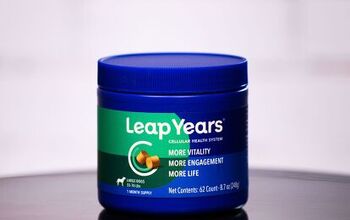
The Season of Giving Begins With A Leap
We're excited to announce a special initiative in celebration of the season of thankfulness and November's Senior Pet Adoption Month. Starting today, Leap Years is offering a free bottle of its daily chewable supplement to anyone who adopts a senior dog (over 5 years old) from a shelter or rescue. All you need is proof of adoption, and while supplies last, your senior pup can start benefiting from Leap Years' formula that has already changed the lives of dogs across the country.

Working Dog Gets Stolen and Dropped in a Shelter 700 Miles From Home
We all love our pooches, don’t we? It’s impossible to imagine that someone would be capable of stealing your four-legged companion. But, sadly many dogs get stolen every day. That’s exactly what happened to Hank, a 12-year-old McNab mix, who was working on a ranch in Oregon.The woman who brought Hank to the St. George Animal Shelter told the staff that she had found the dog locally. However, Hank was more than 700 miles away from home!“He was a working dog,” said Animal Service Officer Supervisor Cathy Freitas to St. George News. The pooch was found on a ranch in Oregon and driven to St. George by a woman who lied to the shelter staff and said that she found the dog in the local area. “The dog was absolutely well cared for and happy,” Freitas added. “And the person who saw it assumed otherwise and thought rather than going to the authorities and saying ‘I found a dog,’ she intentionally drove the dog from that area because she didn’t want it to go back to the owner thinking that it wasn’t well taken care of because it was outside… Not every dog is going to be happy lying on your couch and eating snacks.”The shelter posted a photo of Hank on social media, hoping someone would recognize him. Luckily, the post reached the right people, and a person in Idaho recognized the pooch. Soon, everything became much clearer.As it happens, Hanks was with his family for a long time, and they missed him terribly. Unfortunately, Hank’s owners didn’t know where to start looking for him because the people who took him had driven so far away. When the shelter got ahold of the owners, they immediately got into their vehicle and drove 700 miles to get their dog. That’s 1,400 miles round trip - a sure proof of the love and dedication that they have for their pooch.The owners explained that Hank is in the fifth generation of McNab dogs bred to work on the family’s ranch. People should know that there are working dogs, Freitas explained. These dogs are bred and trained to work and that’s where they feel the most comfortable and happy. If you happen to find a dog near livestock, there’s a good chance that it’s a working dog, and it’s best not to approach it. If the dog seems neglected or injured, contact Animal Services or nonemergency dispatch. This way the local authorities can check on the dog and get a hold of its owner. When it comes to Hank, the St. George Animal Shelter wouldn’t be able to hold his owners accountable if he had been neglected or abused because they are outside of the St. George Police Department’s jurisdiction. The police from the dog’s hometown wouldn’t have been notified, giving the family a chance to adopt another dog.Taking a dog like this is extremely stressful for them and their family, but it can also put their herd at risk, as they would be without a guardian and more likely to become prey. Luckily, this story has a happy ending and Hank is back on the ranch, helping his owners with livestock. His family could press charges against the woman who took him, even though she might have had the dog’s best interest at heart. At the end of the day, she stole Hank and transported him across state lines. If you come across a dog herding livestock, stay a safe distance away and don’t offer any treats or food. According to Freitas, most working dogs aren’t aggressive towards people, but they can be if they sense their herd is at risk. Let’s not forget that working dogs aren’t house pets. Join the PetGuide community. Get the latest pet news and product recommendations by subscribing to our newsletter here.

What Age Should You Start Clicker Training?
Clicker training is a popular form of positive reinforcement dog training that uses a small handheld device called a clicker to mark and reinforce desired behaviors. The clicker makes a distinct and consistent sound that signals to the dog that they have performed the desired behavior, followed by a reward such as a treat or praise. The idea is to associate the sound of the clicker with the reward, making it a powerful tool for communication between the owner and the dog.Now, if you want to try clicker training with your dog, you could be wondering at what age should you start. Very early on? Or as your puppy grows a bit older? Let’s find out.What Age Should You Start Clicker Training?Clicker training is versatile and can be used for teaching basic commands, tricks, and even addressing behavioral issues. It is a humane and positive approach to training that fosters a strong bond between the owner and the dog. Clicker training can be started with dogs at a relatively young age, typically when they are around 8 weeks old. Puppies are capable of learning basic commands and behaviors from a young age, and clicker training can be a positive and effective method for teaching them.However, it's important to keep in mind that very young puppies have shorter attention spans, so training sessions should be kept short and fun. Focus on simple commands and behaviors, and use positive reinforcement, such as treats or praise, in conjunction with the clicker.Consistency and patience are key when training puppies, and it's important to make the training sessions enjoyable for them. Stay consistent and maintain your composure and command. Even if the early training sessions last just a few minutes, keep it up. Of course, if you're unsure about how to start clicker training or have concerns about your puppy's readiness, consulting with a professional dog trainer or attending puppy training classes can be helpful. Always use positive reinforcement methods to create a positive and trusting relationship between you and your dog.Remember that clicker training requires patience and hard work to be successful. The idea is to associate the sound of the clicker with positive reinforcement, making it a powerful tool for communication between the owner and the dog.4 Things to Know About Clicker TrainingTo ensure your training sessions with a clicker are successful no matter when you start implementing them in your pet’s routine, you need to know the basics. These tips will help you optimize your process for maximum efficiency:Timing is KeyClicker training relies on precise timing. The click should occur at the exact moment your dog exhibits the desired behavior. This helps your dog make the connection between the behavior and the reward.Positive Reinforcement
Our Services
- Chat with a Vet Online
Sick Pet Care and Diagnostics
- Allergies and Dermatology
- Pet Pain Management
- Orthopedic Examination
- Neurological Examination
- Electrocardiogram (ECG)
- Pet Ultrasound
- Veterinary Diagnostic Imaging
Wellness and Preventative Care
- Wellness Exam
- Puppy and Kitten Wellness
- Nutritional Consultation
- Behavioral Consultation
- Vaccination
- Microchipping
Travel Certificates
- Domestic Travel Certificate
- International Travel Certificate
Surgical Procedures
End-of-life care.
- In-Home Pet Euthanasia
- Quality-of-Life Consultation
Our Locations
- Philadelphia
- Washington, D.C. Area
- Conejo Valley
- Greater Los Angeles
- Orange County
- San Francisco
- How It Works?
- Our Veterinarians
- Referral Program
Pet Health Care Resources
- Pet Health Care
- Pet Nutrition
- Pet Symptoms
- Pet Conditions
- Pet Diseases
- Pet Medications
- Pet Lifestyle
Tools, Calculators & Calendars
- Pet Wellness Tools
- Pet Holidays and Awareness Days
Customer Support
- Help Center
- Code of Conduct

Preparing a Pet for a Home Vet Visit: 9 Essential Tips
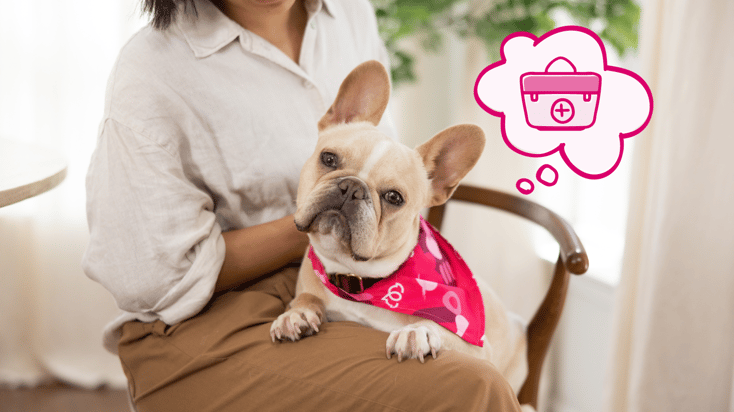
Table of Contents
Home veterinary visits are changing the game for pet care , allowing our furry friends to receive expert medical attention without leaving their favorite lounging spot. Gone are the days of stressful car rides or anxious waiting room moments!
But as with all good things, preparing a pet for an in-home visit makes things even smoother. Setting the stage for your pet and the veterinarian helps to achieve a successful checkup, ensuring everyone's comfort.
Here's how to prepare your pet for an at-home vet visit:
1. Gather Medical Records
Before the veterinarian arrives, it's a good idea to have your pet's medical history on hand . This includes previous visit summaries, vaccination cards, and any prescribed medication details.
A comprehensive view of your pet’s health journey helps the veterinarian offer the best care possible.
2. Designate a Safe Place
Choose a quiet and familiar space in your home for the veterinarian’s visit. This could be your living room, a spacious bedroom, or any area your pet feels relaxed in.
Make sure that the area is clear so that there is room for the veterinarian to examine your pet as well as no hiding places. Close doors to other spaces to ensure your pet is present when the veterinarian arrives.
🏆 The goal is to keep the environment calm and stress-free.
3. Stock Up on Supplies
Have essentials like treats, toys, or even their favorite blanket ready . These items can comfort or distract your pet during the examination.
Remember to keep things like favorite treats, towels, muzzles or crates (for pets that might become anxious), and leashes within reach.
🐱 New Kitten Checklist
🐶 New Puppy Checklist
4. Prepare Your Questions
Like a regular veterinary visit, you'll want to maximize the time you have. Jot down any questions or concerns you might have about your pet’s health or behavior.
Being proactive ensures you don’t forget to address any pressing issues.
5. Communicate with Your Veterinarian
It’s important to communicate with your veterinary team before your home visit . Let them know if your dog or cat tends to become highly anxious or tries to bite.
Share anything other information you think is important for your veterinarian to know about your pet. This helps your team to prepare in advance and be better equipped for the safety and care of your pet.
6. Keep Distractions at Bay
Reduce potential stressors by minimizing disruptions . This might mean keeping other pets away, turning off loud appliances, or letting family members know in advance so they can either be present or give space as needed.
7. Practice Calming Techniques
Some pets are naturally more anxious than others. If your pet tends to get stressed, consider calming techniques .
This could include playing some gentle music, using pheromone sprays, or introducing them to a calming collar before the veterinarian’s arrival.
Does My Dog Have Anxiety?
1. does your dog bark a lot when you’re not at home, 2. is your dog panting a lot more than usual, 3. is your dog destructive when left alone (chewing, digging, or shredding), 4. is your dog having accidents inside the house more than usual, 5. is your dog drooling more than usual, 6. is your dog shedding or losing hair in patches more than usual, 7. does your dog seem like they are on high alert (can’t relax, overly watchful, or pacing), 8. is your dog demonstrating repetitive behaviors (spinning, digging, biting their paws or tail), 9. has your dog experienced sleep changes recently (sleeping a lot more or less than usual), view results, 8. familiarize your pet with the veterinarian.
Let your pet have a casual meet-and-greet with the veterinarian before diving into the medical procedures. A simple hello, accompanied by a treat from the veterinarian, can set a positive tone for the actual checkup.
Our veterinarians use a Fear Free® approach, ensuring a calm and friendly start to each visit.
9. Provide Quiet Time Post Appointment
After the veterinarian leaves, give your pet some quiet time or a favorite activity to help them relax. Monitor them to ensure there are no post-visit issues and reward them with a treat or play session.
Bringing the veterinarian into your home isn't just about convenience —it's about creating an ideal environment for pet care .
In the familiar and relaxed home setting, your pet remains calm, making it easier for the veterinarian to get an accurate read on their health. For all the busy pet parents, home veterinary services save time and reduce stress, taking out the hectic trips to the clinic.
Remember, when your pet is comfortable, they can truly be themselves, making each checkup much more effective.
Ready to make veterinary visits cozy and hassle-free? Book a home vet visit with BetterVet and let your furry friend receive the gentle care they deserve in their favorite place—their home!
Get Your Pet’s Health Checked Out at Home
Say goodbye to stressful vet visits and hello to a comfortable wellness exam in your pet's favorite spot.

Written by Dr. Joshua Montgomery

Medically reviewed by Laura Fontana, DVM

Kitten First Vet Visit: What You Can Expect

Puppy First Vet Visit: What You Can Expect

How to Prepare for a Virtual Vet Visit
Home » All Posts » Vet Clinic » Do vets do home visits?
Do vets do home visits?

In short, yes. If you ring a vet practice and ask for a home visit, they will often be able to arrange a mutually convenient time to come out to you. We can all appreciate the desire to have your veterinarian visit you at home instead of having to find the time to take your pet to the clinic. But there are some scenarios in which this just isn’t possible, or it’s just not in the best interests of your pet.
Home vet service or a home visit?
It depends on your local vets as to whether or not they are able to accommodate a home visit for you. Some vets aren’t able to provide this service because of constraints on manpower, for example.
Even if they do offer it as a general rule, whilst your vets may do everything possible to see your pet at home, please be aware that they might need you to be flexible. A veterinary clinic can often have a number of emergencies that arrive at the same time and this could mean that your veterinarian has to help another poorly pet before they can get out to see you.
Alternatively, there are a growing number of independent, dedicated home veterinary services running these days. Often made up of one or two vets, with or without the assistance of a veterinary nurse. This can be an ideal option for clients whose routine vets can’t offer a home visit service. These services are complementary to your own vets because many of them will not be able to offer out or hours or emergency care to your pet, in which circumstances you’d need to contact your normal vets.
Can I ask for a home visit for anything?
This is key and we urge owners to be open-minded when requesting home visits for their pets. Why? Well, put simply, for the good of your pet.
What you may interpret as your dog just being a bit quiet, having had an upset tummy for a few days, we would see as a list of various different things that could be going on. Several of which could be very serious, requiring timely diagnosis (through imaging, blood tests, etc), to give your pet the best care possible.
Your vet might see things from a different point of view, because they have the experience to know that things often aren’t as straight forwards as they might appear. So whilst you might prefer a home visit, if they recommend a trip to the clinic it’s best to follow their advice.
Where we are concerned that your pet will need urgent investigations, we will always recommend that you bring them to the clinic. Similarly, the pets we see through the emergency service are generally quite unwell and require the services of the clinic. Please be aware that most dedicated out of hours services will not be able to offer a home visit. This is because of a duty of care to those pets that are being treated or are recuperating.
The reality is that, whilst home visits are a great option for vaccinations, worming, prescription checks and minor ailments, they may not be when your pet is seriously unwell.
Why is my home visit more expensive than in the clinic?
Depending on your vets or chosen home veterinary service, the cost may be more than a normal consultation at the clinic. This relates to the cost involved in having a practice vehicle (such as maintenance, insurance, petrol etc) as well as the indirect cost of removing a vet from the practice during the working day. This affects the overall caseload of the clinic, and the business model as a mobile or home vet service.
Can I have my pet put to sleep at home?
In many cases, this is something that can be arranged. It is often more comfortable for the pet and owner to have these final moments in a familiar place with familiar faces. Give your vets a ring if you think the time is coming and you might prefer to let your pet go at home. Read more about end of life care and how your vets can help during this time in our recent blog series .
You may also be interested in;
- Fear-free handling for cats visiting the vet
- Taking the stress out of a visit to the vets: what helps for cats?
- Can I get a second opinion from another vet?
- Why Do Vets Always Want to Spend Money on X-Rays?
- How do vets treat blood loss in cats and dogs?
Related Articles
Leave a comment cancel reply.
Your email address will not be published. Required fields are marked *
Save my name and email in this browser for the next time I comment.
This site uses Akismet to reduce spam. Learn how your comment data is processed .
Have you tried to get a vet in Northampton to do a home visit, for a large heavy (not overweight) elderly dog – mobile issue – anxiety ? the only thing these vets will do at a home visit “is put your dog down” that is today’s hardened hideous reality, there’s no palliative end of life care, no interest in older pets these day (their disposable, get another one and put them down!). What has become of compassion in service, is it that is cash and time are now the bottom line! it’s a moral outrage we don’t expect it free of charge – offered to pay them to come out – I am disgusted now – where is this all going to end…… if you cannot get a large older dog into a vet? If you have a conciseness you will not have to leave it to the imagination – to some up these days – a home visit now means euthanasia
I can’t comment for every vet in Northampton, but I am aware that most of the vets you see will have very little say on policies in their practice. However, the RCVS – our regulator – says the following in our Code of Conduct : “3.36 In all but exceptional circumstances the interests of companion animals will be best served by being taken to a veterinary practice where the attending veterinary surgeon has access to a full range of veterinary medicines, equipment and facilities. Exceptional circumstances might include an entrapped animal that cannot be moved prior to veterinary attention.”
“3.39 Veterinary surgeons are not obliged to attend away from the practice, unless in their professional judgement it is appropriate to do so. This applies even if owners demand attendance away from the practice or the owner’s personal circumstances mean that they have to make special arrangements to transport their animal to the practice. Where a veterinary surgeon has declined to visit but offered to see the animal at the practice, or make other arrangements, the responsibility for the animal’s welfare rests with the owner.”
Username or Email Address
Remember Me
Registration confirmation will be emailed to you
By joining the Forum, I agree that I am aged over 18 and that I will abide by the Community Guidelines and the Terms

Report a Thread or Reply
Thank you for your help. A member of our team will investigate this further.
- Vets Near Me
- Symptom Checker
- Poisons Guide
- Pet Health Advice
- Pet Insurance
- Vet Prices Comparison UK
- Dog Breed Guide
- Best UK Vet Awards
- Info for vets
- Cookie Control
- Privacy Policy
Be a smarter pet parent
Next time, skip the web. Get health tips and wellness advice for your pet straight to your inbox.
- dog parent basics
How often should I take my dog to the vet?
Annual wellness exams are crucial for your dog’s health. But how often should you go? Here’s what to know.
— Medically reviewed by Dr. Erica Irish
Everything we create is factually accurate and biased toward science → meet our team of experts
Updated March 8, 2024
- When to take your dog to the vet
Unexpected vet visits
Frequently asked questions, the essentials.
- Annual check-ups are a key part of your dog’s preventative care — Just as nutrition and exercise are crucial to your pet’s overall health, visiting the vet is, too!
- The frequency of checkups and visits depends on your dog’s breed — Certain breeds have or are prone to specific health conditions that may need to be monitored closely by a veterinarian.
- The number of vet visits per year also depends on age — Puppies and seniors tend to go to the vet more often than healthy adult dogs.
Typically, all dogs should see the vet for an annual wellness exam at least once a year. Regular annual wellness exams can help prevent health problems like illness and disease, and help pet parents to catch forming health conditions early on. Preventative care is key to keeping our dogs healthy.
👉 The cost of vet visits isn’t one of the fun parts of dog ownership, but keeping up with preventative health care will save you money in the long run — and keep your furry friend healthier for longer!
When should I take my dog to the vet?
The number of vet visits per year can vary depending on your dog’s age, breed, and overall general health condition.
Age plays a huge role in the frequency of your vet visits each year. If you adopt a puppy , you’ll get used to going to the vet regularly. Experts recommend monthly wellness exams during early puppyhood — typically once every 3–4 weeks until they’re 16 weeks old, following a basic vaccine schedule .
During puppy wellness visits, the vet will examine them to make sure they’re developing well and staying healthy. Along with vaccinations, your vet will also start giving your pup heartworm , tick , and flea medications that they’ll need to continue taking for their entire lives.
Since puppies need a series of vaccine boosters for full protection, puppies have more frequent vet visits in their first year of life, just like humans!
Adult dogs will typically only need to go to the vet for annual wellness exams, or occasionally for a booster or two. Sometimes your visit may include a fecal test for parasite prevention, annual blood work, heartworm tests, dental exams , and vaccination updates — only as needed or recommended.
Senior pets should see the vet for a routine exam semi-annually, approximately every six months. This is because older dogs tend to have particular health needs and are more prone to illness and age-related injury. In addition to the regular annual vet visit, your vet may recommend some diagnostic tests for your senior pup to assess their overall health further.
Another common part of senior dog vet care is dental care, as dental disease is nearly epidemic in older dogs. Tartar build-up can lead to tooth decay, inflamed and infected gums, gingivitis , and eventually more serious problems later on.
When your dog transitions from puppy to adult , the timing and frequency of annual wellness visits vary based on your pet’s size and breed. An example of this is seen with certain types of dogs, like brachycephalic breeds Trusted Source American Veterinary Medical Association (AVMA) Not-for-profit organization representing 97,000+ vets. Go to source , such as pugs , French bulldogs , and English bulldogs , who will need extra care due to increased health risks .
Due to their flat features and short noses, these dogs are prone to brachycephalic airway syndrome Trusted Source VCA Hospitals Community of veterinarians with up-to-date veterinary information. Go to source , causing airway abnormalities. Their ineffective panting and trouble breathing make them vulnerable to heatstroke and other illnesses.
In addition, these breeds frequently suffer from other health issues like eye disorders, skin fold infections, and dental difficulties. So they may have to see the vet more often.
Overall health
Your dog’s lifestyle and their overall health also play a role in how often they go to the vet. Healthier pets will likely go less often than pets with chronic conditions or other illnesses.
Preventive care can minimize the amount of additional trips you take to the vet each year. Each annual wellness visit allows your veterinarian to catch “silent” conditions at the earliest signs of disease, as well as any other secondary conditions they might lead to.
For example: Veterinarians can “catch” conditions like obesity and dental disease at your pet’s physical. Both of these conditions go hand in hand and can lead to more serious issues like infection , diabetes , and heart disease . It can be avoided by routine care and follow-up.
Planning ahead for your pet’s specific health needs is a vital step for their long-term care. Pets with chronic conditions and endocrine disorders Trusted Source The Merck Veterinary Manual Trusted provider of veterinary medicine. Go to source will probably need more frequent visits regularly than your average pet. Regular testing like ultrasounds, blood work, X-rays , and physical exams can help prevent these conditions from getting worse.
Early detection can potentially slow or minimize the onset of diseases. Treatment such as changing your dog’s diet, medication, or therapeutic interventions, is possible by discovering illness early on.
If you are unsure or think your dog might be pregnant , bring them to the vet as soon as possible. Generally, if you know your dog has mated with another, it’s best to take them to the vet within about 28 days after mating. An ultrasound can confirm pregnancy at this point.
A prenatal checkup for dogs is crucial for any pup that’s pregnant. Your vet may do an ultrasound and blood work and cover their pregnancy nutritional needs . An ultrasound checks for the possibility of puppies, and blood work checks your dog’s hormone levels.
Around day 45, your dog will be in their third trimester, and they will likely require more frequent vet appointments. Your vet may do X-rays and suggest a C-section Trusted Source VCA Hospitals Community of veterinarians with up-to-date veterinary information. Go to source , depending on the breed of dog, the size of the puppies, and the birth canal.
Even for a healthy and active adult dog, the unexpected can happen. And part of owning a dog is preparing for the unexpected. Certain times will require an immediate emergency trip to the vet, like breathing troubles , pale gums , and a hard swollen abdomen , among others.
These signs may indicate a potentially life-threatening condition requiring emergency veterinarian care. They could signal shock, bloat, respiratory distress, or another major condition. Serious illnesses such as organ failure or severe infections might also exhibit these symptoms.
Health concerns, like changes in eating and lumps and bumps , will require a vet visit — but they’re not usually an immediate emergency. If you’re unsure if your pet needs to be seen, consider calling your veterinarian or an emergency vet for medical advice.
When to immediately go to the vet 🚨
In an ideal world, annual and semi-annual check-ups will be the only vet attention your canine companion needs. But emergencies are bound to come up, and knowing the signs can help you make a quick decision to get your pet to the vet as fast as possible.
If your dog shows any of these symptoms, go to the animal ER right away:
- Injury from a car or blunt object
- Unconsciousness
- Trouble breathing
- Vomiting or diarrhea that lasts for more than six hours
- Broken bones
- Drooling and foaming at the mouth
- Lethargy or behavior changes
- Extreme pain
- Sudden collapse or gait issues
- Disorientation
- Hard or swollen abdomen
👉 You know your dog best. If you think your pup’s behavior has suddenly changed, it doesn’t hurt to reach out to your vet.
Signs your dog should see a vet, but it’s not an emergency
While certain times call for an immediate trip to the vet, other times are not necessarily an emergency but still require a vet visit. You should still see a vet if you notice changes in eating habits, bumps, vomiting, diarrhea, or a runny nose. However, these are typically not immediate emergencies.
- Change in eating or drinking habits. Skipping a meal isn’t that unusual for a dog, especially on hot summer days or in a new environment. But more than one missed meal could be a red flag. Keep an eye out for any unnatural changes in your pet’s eating or drinking habits — and if they extend past a few mealtimes, consider going to the vet.
- Lumps and bumps. As animals get older, it’s not uncommon to find a few small lumps and bumps on their body. While many of these masses are benign and aren’t any cause for concern, it’s best to ask your vet to make sure they aren’t something more serious.
- Vomiting and diarrhea. If your dog throws up once or twice and shows no other signs of illness, they’re probably fine. It’s the same for occasional diarrhea and isn’t usually anything to worry about. However, call your vet if the vomiting or diarrhea continues for longer than six hours or contains blood.
- Runny nose. Runny and stuffy noses aren’t entirely uncommon in dogs. However, you should contact your vet anytime you notice your pet has a runny nose or thick nasal discharge accompanied by other signs of illness (such as fever, dehydration, lack of appetite, or fatigue).
Routine vet visits are one of the best ways to give your dog a healthy and happy life. How often you see your veterinarian depends on your dog, their age, and any conditions they may have. While most adult dogs go to the vet once a year, they can go more or less frequently depending on their unique needs.
Your dog’s age, breed, lifestyle, and any underlying medical issues may require more regular or specialized veterinary care. Some breeds, such as giant breeds, may be prone to joint pain and other problems, or small breeds can be susceptible to dental issues. They may need more frequent veterinary care as part of their healthcare.
Sign up for the best pet advice you can get
When should I take my senior dog to the vet?
Senior dogs need more frequent vet visits than younger adult dogs. They have more particular health needs and can be more prone to illness and age-related injury. For that reason, senior dogs should see the vet approximately every six months.
How often should I take my dog to the vet for checkups?
Puppies need to see the vet about once a month up until about 4-5 months old, adult dogs (1-7 years) usually only need to go once for annual visits (depending on your pet’s overall health), and senior dogs (8+ years) should be seen twice a year.
How much is a routine vet visit for a dog?
On average, a routine checkup for your pet can cost anywhere between $50 and $250. The cost of routine vet checkups can vary based on the area you’re in and can also vary depending on your pup’s age and health history.
Can a dog get kennel cough from a vet visit?
Kennel cough is an extremely contagious upper respiratory virus. It’s easily and quickly spread, and can be transmitted through the air. It can also be transmitted by coming into direct contact with an infected animal, or by sharing a contaminated object (like your pet might by greeting an infected dog on a walk or drinking from a contaminated water bowl at the park).
It’s characterized by a hacking cough lasting a few days to a few weeks. It can also lead to more serious infections like pneumonia. The Bordetella (kennel cough) vaccine protects dogs against this.
Although it’s easily spread, getting it just from an exam visit is very unusual. The time your pet spends in the room is brief, and the rooms are typically cleaned between uses.
Will a vet see my dog without shots?
Yes, many rescued or adopted dogs may not be up to date on shots, and puppies will need shots. Once you make your initial appointment, though, it’s important to consider getting up-to-date on vaccinations. Your vet will recommend the shots your dog needs based on age and the area you live in.
11 min read
The ultimate guide to dog vaccinations
How much does it cost to spay or neuter your dog, how does pet insurance work.
Mange is a skin disease caused by mites and, while preventable and curable, can be highly contagious.
Every pup loves a good chew. But what’s the safest option for your canine connoisseur and which ones should you avoid?
Exercise is an important part of a dog’s overall health and well-being. Here’s how much exercise your pet pal needs.
How to increase your dog’s daily water intake to prevent dehydration.
- Colorado Springs
- Los Angeles
Mobile veterinarian in Glendale, AZ
- or Call (877) 372-4092
- High demand area! Only few spots left.

At-Home vet services Glendale, AZ
Services available.

Pet exam and home visit fees are included in every visit (prices vary by city). Prices for other services and diagnostics vary based on the type, age, weight and health condition of your pet. Prices are subject to change.
Meet our Glendale, AZ veterinarian team
Dr. Candace Chmielewski
Dr. jiyoun kim, dr. laura wiles, dr. d'janai butler, dr. erin stensland, dr. ellen singh, dr. susan meadows, dr. anthony smith, dr. elizabeth gill, dr. justin similo, dr. stelian fuduli, dr. sara cobos, dr. joshua borg, dr. courtney wiese, dr. lindsay campbell, dr. brent casler.

Dr. Joseph Baker

Dr. Jovanna Canty
Dr. constance drivick, dr. janessa rankin, dr. guelmarie davila.

Dr. Austin Whitlark

Dr. Andrew DeStefano

Dr. Martina Midkiff

Dr. Jessica Garcia Fink

Dr. Tracy Crawford

Dr. Joni Anderson

Dr. Nicole Savageau

Dr. Blake Pankonien

Dr. Kristina Bernardi
Dr. gloria macias.

Dr. Courtney Smith

Dr. Matthias Mitra
Dr. bradley krohn.

Dr. Erin Newport

Dr. Jennifer Fenner
Read some of our 5‑star reviews, benefits of at-home pet vet care.
At-home pet vet care provides several advantages for pet owners and furry companions. Below are the main benefits:
Local updates
Weather today, most popular local pet names, % dogs vs cats we checked, most popular local pet names.

Frequently asked questions
Yes, we are open on the weekend, except Sunday.
Veterinary service areas in Glendale, AZ
Book a home vet visit in glendale, az today.
- Total Wellness
- Our locations
- Refer a vet
- Become a partner
- Code of conduct
- Working Hours:
- Home Visits
8am – 6pm (Mon – Sat), varies by location
- On-call Support:
8am – 9pm EST (Mon – Sat)
Get the App:
Contact Us:
- [email protected]
- (844) 722-VETS
[email protected] (844) 722-VETS
Working Hours:
Home Visits: 8am – 6pm (Mon – Sat), varies by location
On-call Support: 8am – 9pm EST (Mon – Sat)
- Privacy Policy
- CA Privacy Policy
- Accessibility
Unlock $20 off your visit
Sign up to save on your first at-home appointment and receive exclusive pet care tips and updates.
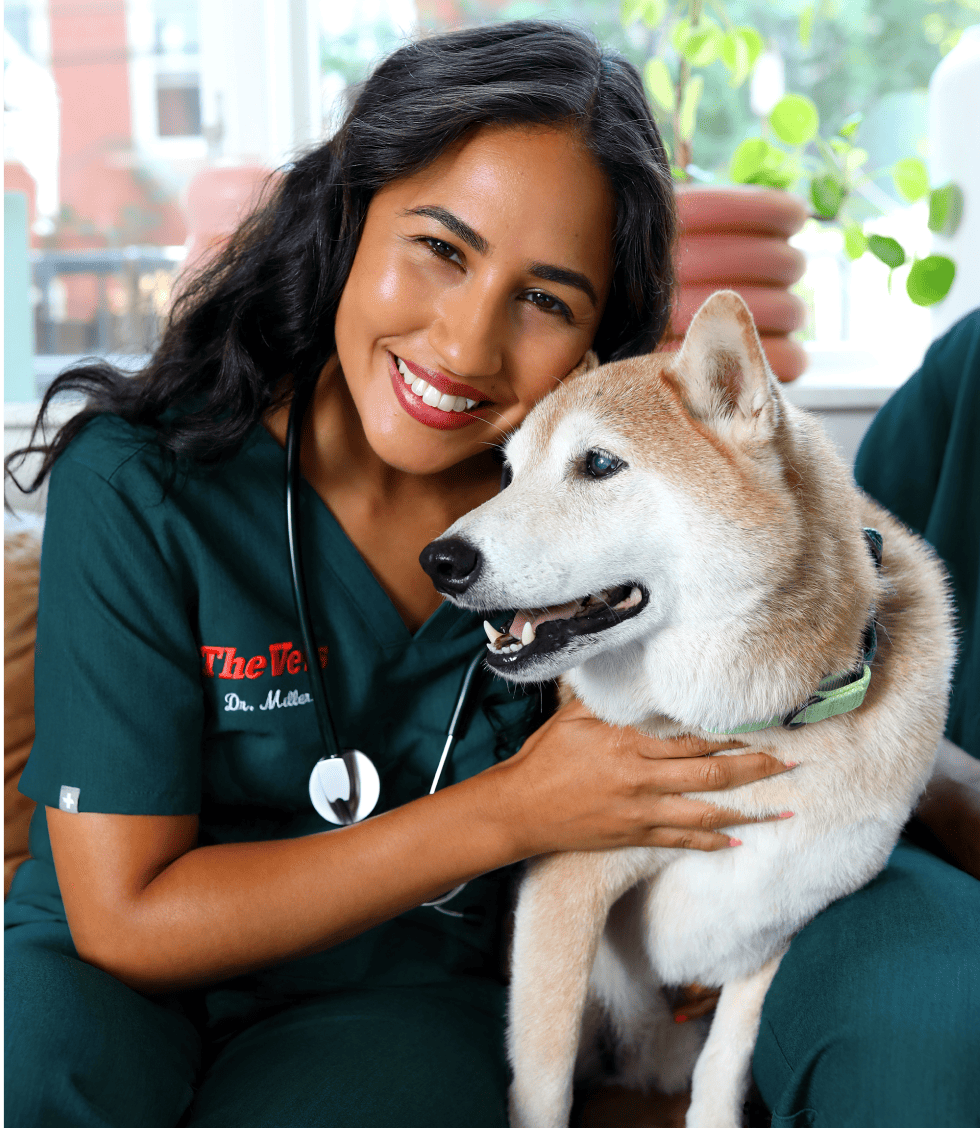
Use the coupon code below to get $20 off your first visit.
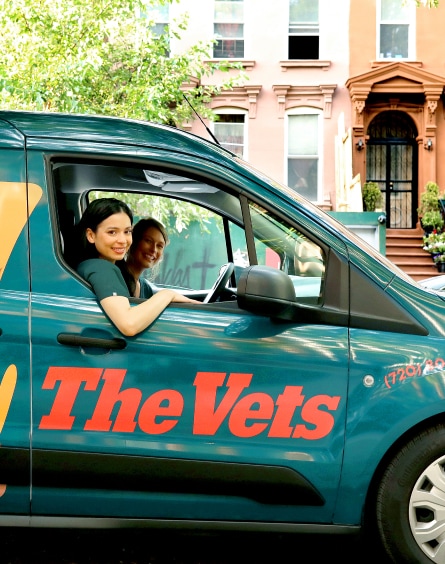
Please allow for one business day for our team to reply.
Get Our Newsletter
Sign up to receive our latest updates, tips, and exclusive offers. No spam.
Selling/Sharing Preferences
In order to complete your request, please complete the following information. By submitting this request, you are asking us not to share your information with third-parties in exchange of anything of value. For more details about your right to direct us not to sell your personal information, please see here.
By completing this form and clicking the "Send Request" button, you agree to our Terms of service and Privacy policy.
We Received Your Appointment Request!
One of our team members will call you soon to confirm the details of your appointment..

Why Do Dogs Need Regular Checkups?
- What to Bring
Other Procedures
You probably get a reminder from your veterinarian's office every year saying that it's time for your dog's annual wellness exam. But what exactly is this vet visit all about? Just as humans should visit their doctors for routine health checkups, it's recommended that dogs see the vet on a regular basis for physical examinations.
An annual wellness exam is a veterinary checkup for a healthy dog. There are a number of things the vet looks at, and it's all about keeping your dog healthy. Here's what to expect from this yearly appointment.
Most of us know that we should see our doctors for a yearly physical, but we may procrastinate because we feel well. However, dogs don't always show signs of illness, even if they're feeling out of sorts. A physical exam can reveal things to your vet that you might not notice at home, allowing the vet to intervene before your dog becomes really sick. It also gives you and your vet a chance to chat about your dog's preventive care on a regular basis.
According to the AAHA-AVMA Canine Preventive Healthcare Guidelines , every dog should be examined by a veterinarian at least once a year. Your vet may recommend more frequent visits depending on your dog's age and overall health. Most vets suggest senior dogs see their vet every six months. Dogs with chronic health conditions may need to go even more often.
What To Bring to Your Dog's Annual Exam
With a little preparation, your dog's annual vet visit can be fairly simple. Many dogs enjoy the vet's office because they get treats and attention. If your dog is anxious at the vet or tends to get car sick , ask your vet about medications or supplements that you can give in advance.
Your dog should be on a leash or in a travel crate until you enter the exam room. Vet offices typically require pets to be restrained for everyone's safety. Keep your dog close to you in the lobby—you don't know what other animals will be there and how they might react to your dog.
Other things to bring to your dog's appointment include:
- Your dog's favorite treats (unless the vet instructed your dog to fast)
- A list of questions for the vet
- Details about your dog's diet
- Any medications or supplements your dog gets
- Veterinary records if your dog has been seen by another vet within the past year
- A fresh stool sample, if possible
What Happens During a Dog Wellness Exam?
An exam may look like a brief once-over, but your veterinarian is actually inspecting your dog from nose to tail. A vet can discover a lot about a dog's health during an exam, including subtle signs of illness that you may not notice at home.
Your dog will be weighed, and you'll both be escorted to an exam room. A veterinary technician or assistant may ask some questions about your dog at home, including appetite, diet, medications, potty habits, and overall behavior. They may check your dog's body temperature, heart rate, and respiratory rate. Because body temperature is measured with a rectal thermometer, this may be skipped if your dog is especially nervous.
A physical examination involves observation and inspection, palpation (feeling parts of the body), and auscultation (listening with a stethoscope). Each veterinarian tends to have their own routine for exams, but many will begin at the head and work their way back, carefully checking each area of the body.
Initial Observations
The vet will begin by observing your dog's overall appearance. They'll be looking for anything abnormal and assessing a few key aspects of your dog's appearance:
- Body condition: To determine if your dog is at a healthy weight
- Level of consciousness (mentation): To ensure your dog is alert and responsive
- Gait and posture: The vet may watch your dog walk briefly to look for limping, weakness, or instability
- Hydration: The vet will check the skin's elasticity to ensure your dog is not dehydrated
Head and Neck
The vet will examine your dog's face and head to look for asymmetry, lumps, bumps, and other abnormalities. She'll also check the eyes, ears, and nose for discharge or anything else unusual. Using a tool with a special light called an ophthalmoscope, the vet will check the structures inside the eye. A similar tool called an otoscope (light with a small cone) will be used to look into the ear canals.
The vet will look at your dog's mouth and teeth for signs of dental problems and make sure the tissues in the mouth appear normal. They'll also feel the lymph nodes, salivary glands, and trachea.
The vet will also manipulate the head and neck to evaluate range of motion and to make sure your pup is not experiencing pain.
Body and Limbs
The vet will now move to your dog's body, checking for masses, asymmetry, and pain or tenderness. They'll palpate the spine, pelvis, and lymph nodes. They'll flex and extend the limbs to feel for stiffness, clicking, popping, or crackling. They'll also inspect the paws, nails, and skin. Arthritis , skin conditions , and external parasites (such as fleas ) may be found during this part of the exam.
Heart and Lungs
Using a stethoscope, the vet will listen to both sides of the heart and lungs for issues like a heart murmur, arrhythmia (abnormal heart rhythm), or abnormal lung sounds such as crackles or wheezing. They'll also record your dog's heart rate and respiratory rate.
The vet will visually check this area for enlargement, bruising, or other abnormalities. Then, they'll palpate the abdomen to feel the liver, kidneys, stomach, intestines, and bladder. The vet may also use a stethoscope to listen to the abdomen and evaluate motility.
Genital Area
This part might not be your dog's favorite, but the vet needs to take a quick look at the area around the anus and the penis or vulva. They'll check for discharge, swelling, masses, anal sac problems, and other issues.
Your veterinarian will discuss the results and inform you if they've found anything that needs to be addressed. If your dog is in good health, they'll give any vaccinations that are due.
Certain routine wellness tests are recommended at least once a year for most dogs. These include:
- Fecal analysis to check for intestinal parasites
- Heartworm test (this is needed even if prevention is current)
- Tick -borne disease screening
The vet might recommend additional lab work, especially if your dog is a senior or if there are any issues found on the exam. Lab tests may include:
- Complete blood count to evaluate blood cells
- Blood chemistry to look for metabolic issues and organ diseases
- Urinalysis to assess bladder health and look for signs of kidney and liver issues
- Additional diagnostics, such as X-rays and ultrasounds, may be recommended if your vet notices an issue during the exam.
Finally, your vet will discuss parasite prevention and refill prescriptions if needed. This is the time to make sure you've asked all your questions. Your vet can offer professional insight into canine nutrition, behavior, home care, and more.
How Much Does a Wellness Exam Cost for a Dog
The average cost for a veterinary wellness exam is about $50, but this varies by region. It's important to understand that the exam fee only covers the physical exam and veterinary consultation. It does not include vaccines, lab work, products, or additional services.
When all is said and done, a dog's annual visit typically costs about $200-500 (or even more if you need products or additional tests). If you're on a tight budget, ask the veterinary staff for an estimate in advance—your vet will try to work with you as long as you make them aware of your needs.
Related Articles
More related articles.
Now accepting walk-ins and urgent care at our Carmel Valley location

Los Angeles
- 5980 Village Way #B104 San Diego, CA 92130
- 619-880-8986
- [email protected]

- Hours : 8am - 6pm M-F
- Sat : 8am - 5pm
- Spay & Neuter
- Urgent Care
- Wellness Exams
- 485 Santa Fe Drive Encinitas, CA 92024
- 619-430-4445
- [email protected]
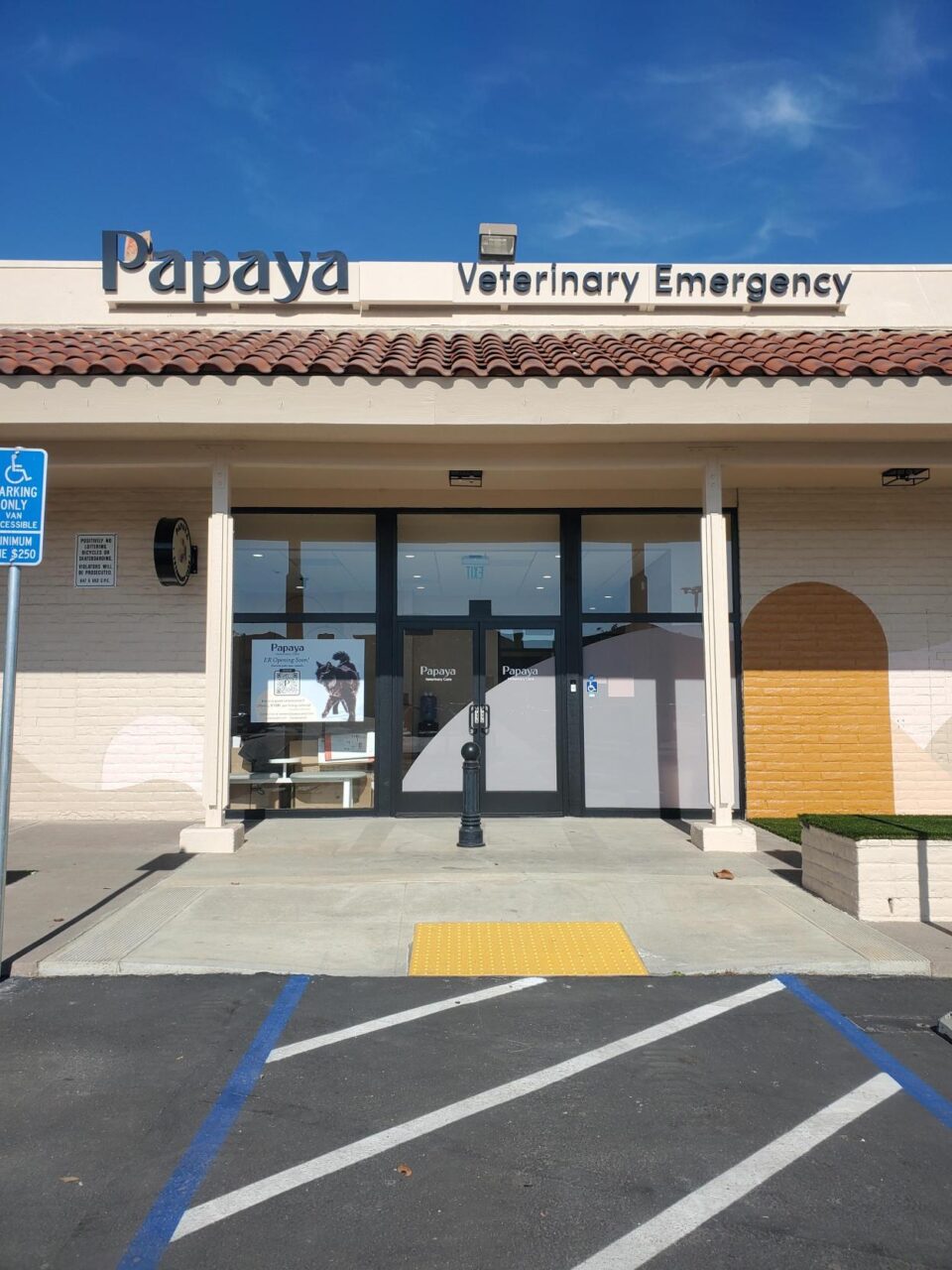
- Hours : 7pm Thursday – 7am Tuesday
- Emergency Services
By subscribing you agree with our Privacy Policy and provide consent to receive updates from our company.
- Spay and Neuter
- Vaccinations
- Wellness Visits
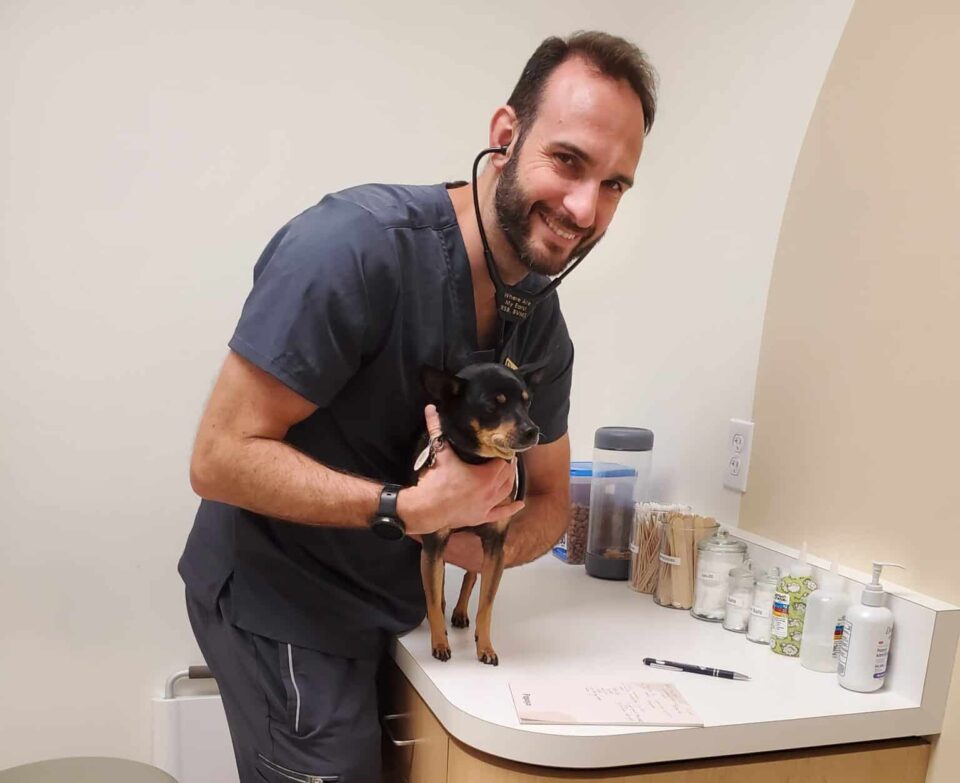
“If you are looking for a vet clinic with professional, super kind, well organized, reliable veterinarians, I believe this is the vet clinic for your precious pets!”
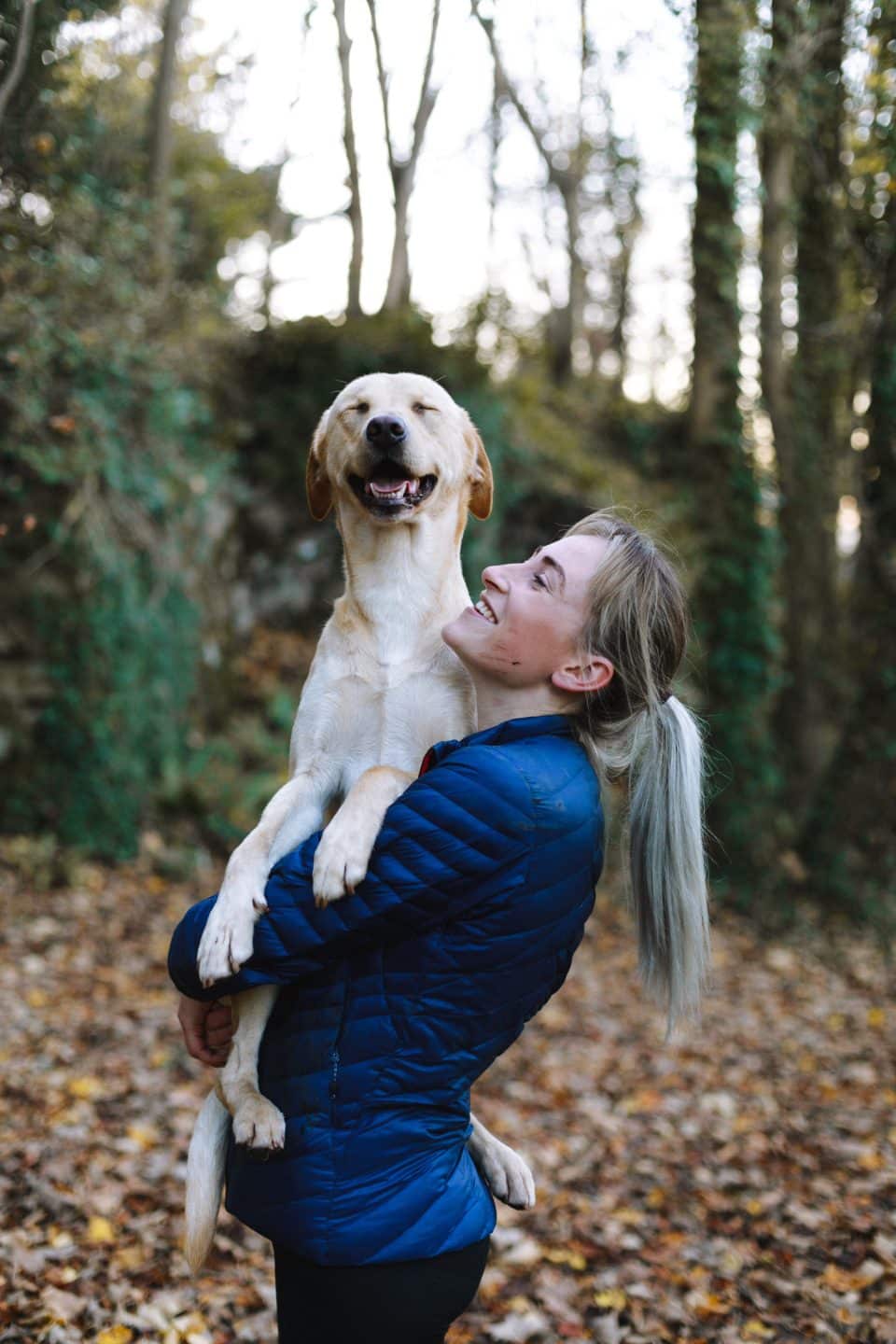
“Such a wonderful vet clinic! I bring all my fur kiddos there. Thank you for being so caring, Papaya!”
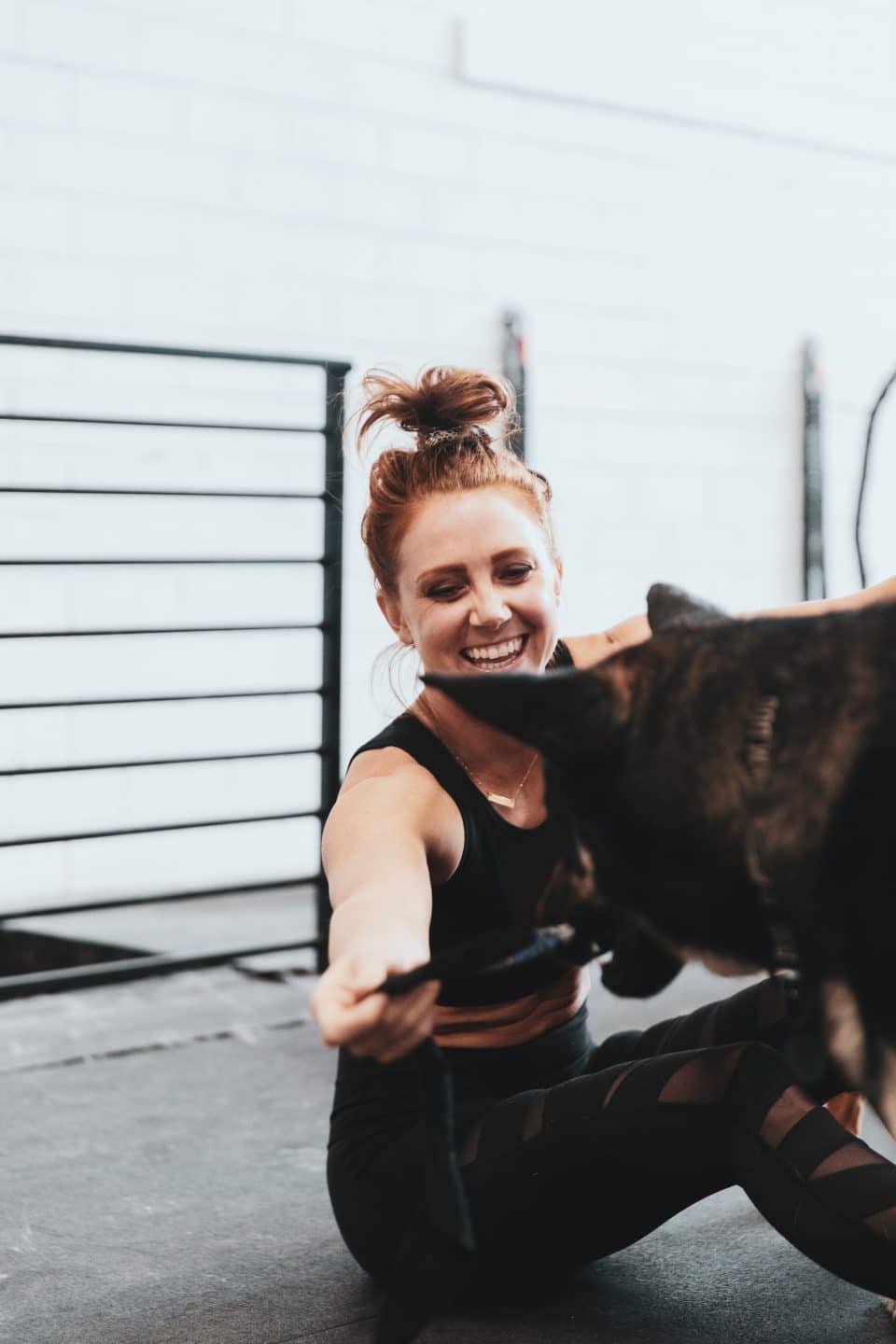
“I would highly recommend this clinic to anyone if you’re looking for superb care.”
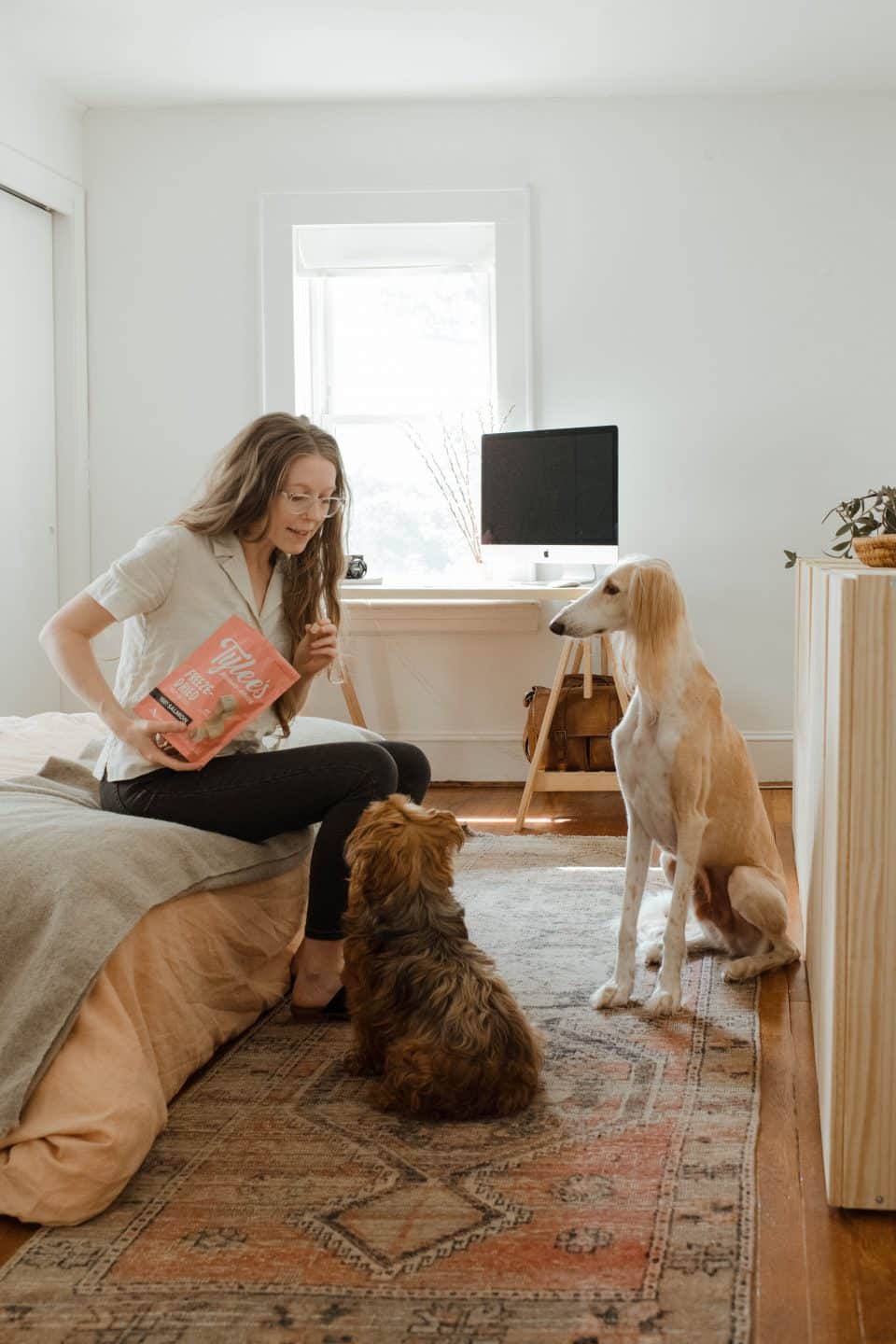
“I have never found a vet that I leave feeling so happy after an appointment. Thank you to everyone at Papaya!”
Jordanna W.
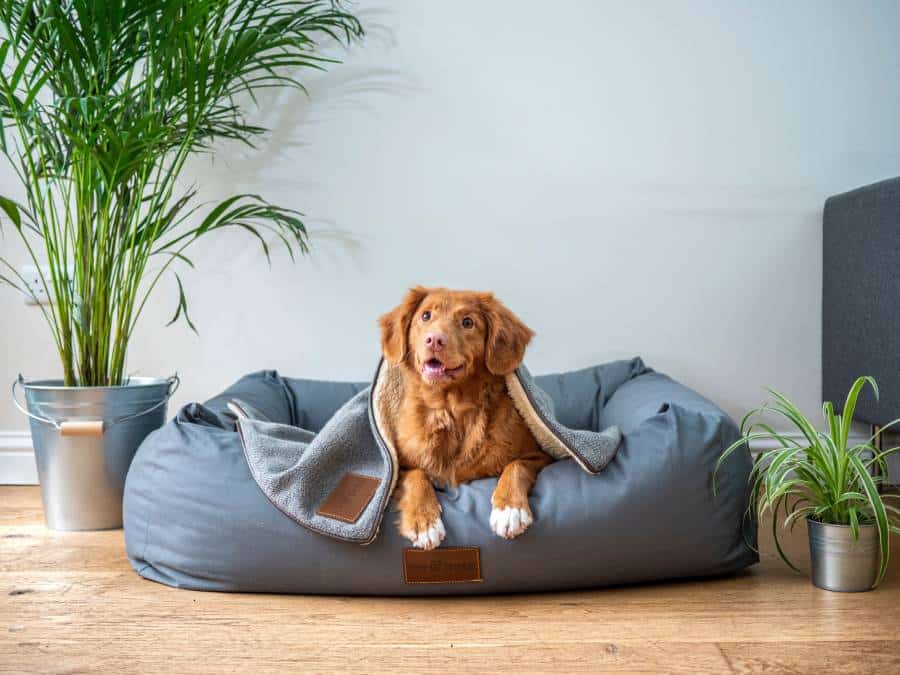
Checklist: What to do before, during, and after your dog vet visit
Published on Jul 10, 2023
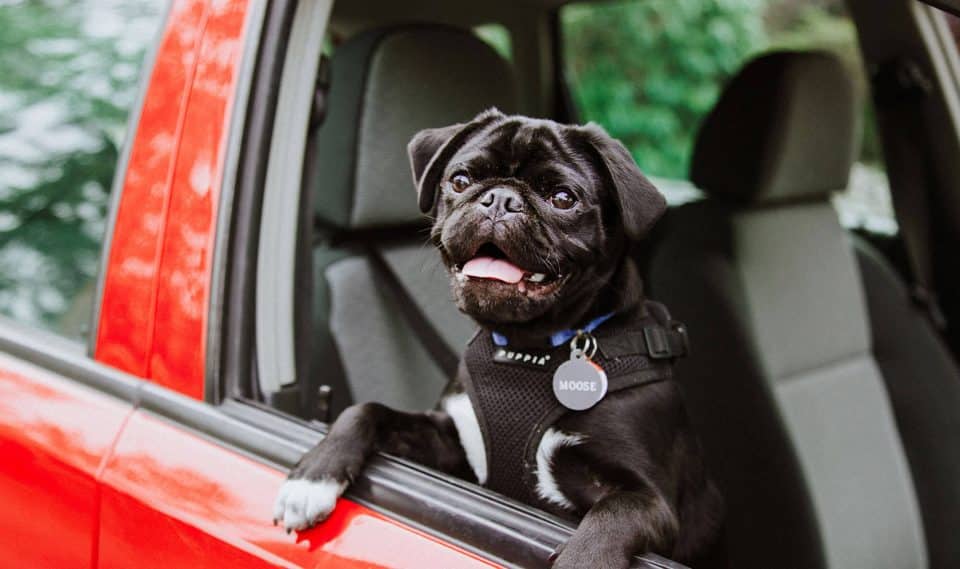
Taking your dog to the vet regularly for a dog wellness exam is an essential aspect of their lifelong health. Aside from monitoring your pet’s health, you can also ask the vet questions, such as how does foxtail affect dogs or CBD and dogs . However, it’s not uncommon for the vet visit to be a major source of stress for your pup. If your dog’s least-favorite place to be is the vet, keep this puppy first visit checklist close on hand. It is specifically designed to reduce stress at the vet for both your dog and you, from the days leading up to your planned dog vet visit or routine checkup to when you bring your best friend back home.
3+ Days Ahead of Your Dog’s Vet Appointment
- Make sure your car is equipped for your canine passenger.
- Take your dog in the car for joy rides to increase their comfort level.
- Practice simple handling exercises
- This might include a paw massage or gentle restraint, paired with plenty of treats.
- Write down any questions or concerns that you have for the vet.
The Morning of Your Dog’s Appointment
- Budget plenty of time ahead of the appointment to avoid being rushed.
- Take your dog for a walk to let them go to the bathroom and run off some energy. If your pet has a bowel movement, collect it and bring it with to the vet if they are due for their fecal test.
- Don’t feed them ahead of the appointment (so treats are extra delicious!)
- If your veterinarian recommends supplements or medications ahead of car travel, give them to your dog as prescribed.
- Queue up a calming playlist. This YouTube channel has several playlists for dogs!
- Favorite treats
- Favorite toy
- Grooming brush
- Clothing that smells like you

At Your Dog’s Veterinary Appointment
- Wait in your car until your veterinary care team is ready to see your dog and you.
- Use a soft voice; avoid higher pitches or shouting.
- Remain calm; if you’re stressed, your dog will be stressed too! This is especially crucial during puppy vaccinations or emergency care.
- Let your veterinarian know if you have specific concerns or questions.
After Your Dog’s Appointment
- Take them for a bathroom break!
- Give them a calming place to reorient themselves and recover.
- Use a pheromone diffuser to help your new puppy feel at ease.
- If veterinarian-approved, feed your dog a meal or play with them.
- If your dog has just been spayed or neutered , be sure to make the first 48 hours very light on activity.
What if it’s an emergency?
Every pet owner dreads an emergency, but situations like this can arise. You can be prepared ahead of time to get your dog emergency care as quickly as possible. If you’re unsure if your new puppy needs urgent care , call your veterinarian immediately to assess the situation.
- Stay calm as panicking may cause your pet to become agitated.
- Respond as much as possible.
- Place your furry friend in their crate carefully.
- Bring along any prescription medications during your veterinary visit.
- Drive safely to the vet clinic or emergency pet hospital.
Other Reminders
Before you book an appointment , make sure to find the right vet. They don’t necessarily have to be experienced vets, as long as you find someone you and your pets find trustworthy.
Further Reading:
- Discover more Papaya-approved dog parenthood tips .
Related Posts
Provide high quality care with a strong & compassionate community of experts
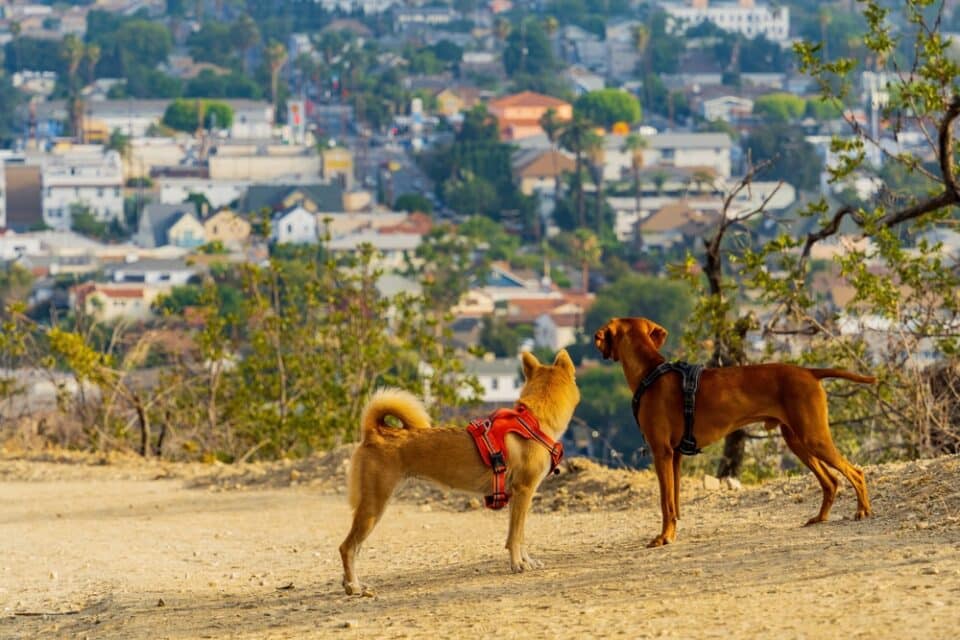
Exploring San Diego’s Pet Friendly Hiking Trails: A Guide for Adventurous Pets and Owners
Welcome, fellow adventurers, to the scenic wonderland of pet friendly hiking trails in San Diego! Join us as we...

New Treatment Options for Pain Management
As part of the aging process, older dogs frequently develop arthritis in their leg joints and spine. Depending on...

4 Effective Flea & Tick Prevention Solutions for Dogs
As responsible pet owners, ensuring our pet’s well-being is a top priority, and one significant aspect of their health...
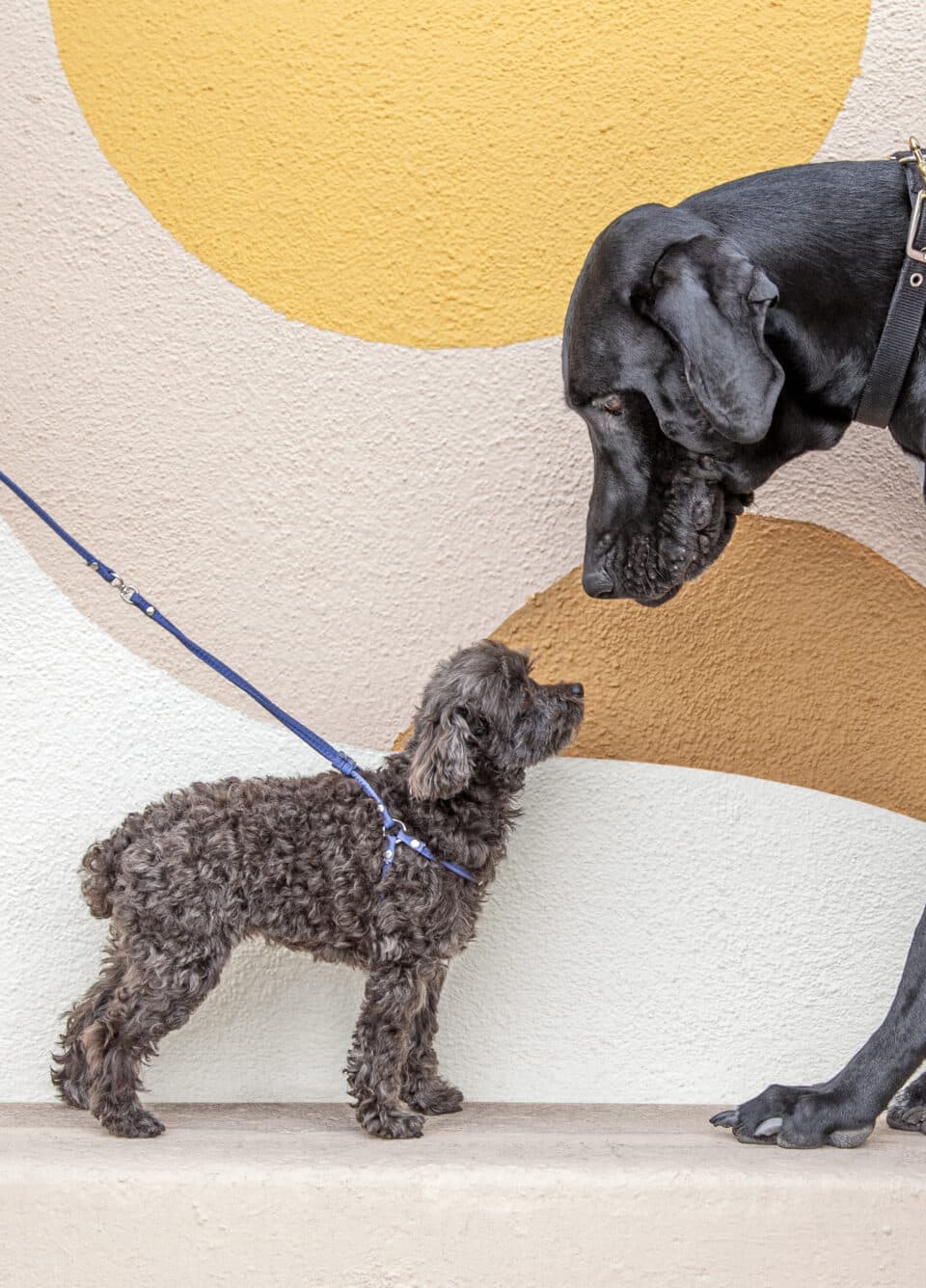
Canine Respiratory Illness Update – Autumn 2023
You may have been hearing about the new mystery respiratory illness that’s been affecting dogs. Let Papaya Veterinary Care...
Don't wait, book an appointment now with one of our incredible veterinarians.

House Call Vet
We are dedicated to providing excellent care. Call us to learn more.
Services Offered by a House Call Vet
Caring for your pets when they are sick can be tough. This is mainly due to the fact that pets cannot tell you why they feel sick. What makes it even tougher is when your pet won’t budge from his bed because he feels too sick or can’t move very well. For these kinds of situations, you will need mobile veterinary services.
We have a mobile veterinarian with a mobile clinic who can bring our veterinary equipment and supplies wherever they are needed. He can address the vet service needs of residents in our practice area. This kind of service is especially beneficial to those who cannot bring their pets to the vet clinic.

Microchipping

Pet Vaccinations

Cost of Using Mobile Vet Services

Preparation for Mobile Vet Visit

Pet Parasites Prevention

Pet Dental Care

Using an in-home veterinarian was the best choice Stephanie Stuart made two years ago when it came to veterinary care.
"We had a stray that I adopted, and there was no way I could get her to a vet because she was very skittish," Stuart said.
That's when someone recommended she call Tom Schmar, of Home Pet Care Veterinary Housecalls, for help.
Schmar has worked as a veterinarian for nearly 30 years in Topeka. He said those who use in-home veterinary care appreciate compassion, understanding and explanations when it comes to the treatment of their animal.
What are the benefits of using an in-home veterinarian?
An American Veterinary Medical Association report said veterinary practice revenue grew 5.2% year over year in 2022, while visits fell by 3.1%, FirstTrust Bank reports .
Featuring reduced startup costs compared to conventional brick-and-mortar practices, mobile veterinary practices have become increasingly attractive to recent graduates and older veterinarians who want to slow down, the study finds.
The mobile clinics enable veterinarians to tend to animals unable to visit traditional facilities and offer services in unconventional environments.
"No. 1, your pet is calmer. They're in their own place. I found they settled down faster after they've been examined, and I don't have to ask 8,000 questions," Schmar said. "I can look around and answer some questions for myself and it may develop."
Stuart said her 2-year-old domestic shorthair cat Maui is less stressed when not leaving home and going through in-office procedures.
More: Can you have exotic pets in Topeka? The devil is in these details.
How many veterinarians offer in-home visits to patients in Topeka?
Schmar and Joe Buerlein, of Topeka Home Veterinary Service, each offer in-home visits.
"I've tried to raise awareness for a very, very long time and the things that people balk at are, No. 1, coming into their home," Schmar said. "Not everybody wants somebody new in their home. It adds 35 bucks. So, people are extremely cost conscious."
Veterinary care accounts for 27% of total pet spending, and the majority of practices are experiencing sales growth, according to the American Pet Products Association.
Does in-home vet care offer all services?
Care treatments depends on each veterinarian.
Many in-home veterinarians provide pet examinations, flea and tick services, pet dentistry, vaccinations, prescriptions, microchipping and euthanasia. All surgeries are referred to local in-office veterinarians, Schmar said.
Keishera Lately is the business reporter for the Topeka Capital-Journal. She can be reached at [email protected]. Follow her on Twitter @Lately_KT.

Pet Euthanasia at Home: Knowing When It's Time and What to Expect
Author: Sarah Wallace, DVM
Published: April 22, 2021
Updated: February 8, 2024
Our mission is to help save dogs' and cats’ lives through our educational content. To support our efforts, this page may contain affiliate links . We earn a commission for qualifying purchases – at no cost to you.
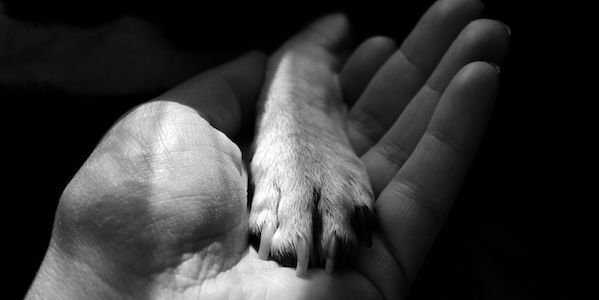
For anyone who has pushed their dog or cat down the sidewalk in a stroller, let their pet sleep in their bed (or even under the covers), stayed up late with their pet after surgery or when that pet is feeling sick, then your relationship is on the level of family.
It is understood, although not often acknowledged, that the heartbreaking part of having a pet is that their lives are so much shorter than ours. When a pet is brought into the home, they weave themselves into the fabric of your life and often will pass away before their human family counterparts. End-of-life care is a shared experience for all pet owners. Although all pets will transition away from this world in different ways, many pet owners will have to witness a decline in quality of life. They will have to make a difficult decision about choosing euthanasia for their pet. To anyone going through a decision on euthanasia or witnessing their pet struggle with waning quality of life, I send my love and comfort your way. You do not have to go through this process alone.
During this difficult time, you'll need to consider these end-of-life options for your pet:
- Let your pet pass away naturally when it is time. Stay in close communication with your veterinarian for guidance to avoid prolonging serious pain or suffering of your pet.
- Try to extend your pet’s life length as much as possible – this strategy often results in emergency veterinary visits (inevitably in the middle of the night) to euthanize.
- Maximize your pet’s quality of life and then strategically choose the time of euthanasia while your pet still has dignity (for example, some dogs know that they shouldn’t potty inside but are too weak to hold it).
There are many reasons why I believe you should consider at-home or in-home pet euthanasia. This article will examine the concepts of quality of life and euthanasia, why euthanasia is performed on pets, the process of having a pet euthanized at home, and what to expect.
What Is Quality of Life for Pets?

Below are some links to quality-of-life assessment tools you can use for your senior or ill pet for guidance. The tools will help you evaluate how your pet performs in basic, daily situations and how that translates to their quality of life. These tools can be used independently or together to help you understand if your pet has quality of life and, if so, how much quality.
- Quality of Life Scoring Tools
- Quality of Life Calendar (print out and track your pet’s progress)
How Do You Know 'When It's Time'?
Dr. Dani McVety shares her insights in this video on how to know "when it’s time” to say goodbye to your pet:
Another quality-of-life tool is the Pet Hospice Journal . You do have to make an account, but the use of the tool is free. Once you log in, the program will help you score your pet’s quality of life based on daily life events. The information is stored and becomes a “journal” in that you can compare your pet’s scores day-to-day. This kind of program is great for identifying trends and seeing progression over time.
What is Euthanasia?
The word euthanasia literally means “good death.” The meaning of the word is exactly why we perform the procedure – to prevent further pain and suffering at the end of life. There are a variety of reasons veterinarians perform euthanasias – poor quality of life, terminal medical conditions, unrelenting pain, inability to re-home a pet because of severe behavioral/safety concerns, caregiver burnout, and the list goes on. Each pet and each situation is different, and a veterinarian will often be able to help you decide if, based on your pet’s condition, they are a candidate for euthanasia.
Euthanasia is a tool we can use to end suffering when nothing else can be done to help the pet. Although many of my clients often feel guilty about choosing euthanasia for their pet, it is considered an act of compassion, mercy, and love. Euthanasia isn’t an option available in human hospice care in many areas, despite the immense pain and suffering some humans face at the end of their life. Consider the alternative. Without euthanasia, some pets may suffer unrelenting pain; others will entirely lose track of who they are and where they are. Some pets would be unable to walk, and others would drown in their own internal body fluid during heart failure.
As a pet parent, I would rather have a little less time with my pet and have that time be good quality time together. The alternative is to have a little extra time, but my pet would be suffering needlessly. Another consideration is that without euthanasia, there’s a risk of having your pet pass away alone when you aren’t home.
Who Performs Euthanasia at Your Home?
There are several options available when you are considering in-home euthanasia. First is your family veterinarian. Sure, they have a brick-and-mortar practice, but some veterinary hospitals will send a veterinarian to your home if requested.
Another option is veterinary companies that send veterinarians specifically to provide in-home hospice and euthanasia for pets. One company has a nationwide presence, while the others have more of a state-wide or local presence. Below are a few companies with larger service areas, but you can also type “in-home euthanasia (your city, state)” into Google and see what services are available to you locally.
- Lap of Love
- Pet Hospice (West Coast)
- CodaPet (Fresno, CA and Oklahoma City)
Why Perform Euthanasia at Home?
Is it better to have your dog or cat euthanized at home? I personally think so, but ask someone you know and trust who has been through the process. If you know someone who has been through euthanasia in a veterinary hospital and another euthanasia at home, that perspective is even better.
If you need more information, read through the pet hospice websites listed above or call their teams and ask questions. There are also lots of online reviews that you can read through. Every person I have talked to who has experienced an in-home euthanasia has said they will always have it performed at home in the future.
Full disclosure: I decided to join Lap of Love and provide in-home euthanasia and hospice care. I believe it’s an important service, and I want to help maintain the human-animal bond and create a peaceful and personal experience for families at this very difficult time in their lives.
Is an In-home Euthanasia Right for Your Family?
Here are some questions to ask yourself:
- If so, then euthanasia at a veterinary hospital may make those feelings the last feelings they have at the end of their life.
- If your pet is indifferent to or even likes going to the vet, then you have many more options available to you.
- If you have been present at a pet’s euthanasia in the past, what was that like for you? Do you think the experience could have been better?
- If you have a larger dog that can no longer get into the car to get to a veterinarian, a veterinarian can come to you.
- Do you have a barrier that keeps you from getting to a veterinary hospital with your pet – like not having a car, having a disability, having a busy schedule to work around, or not having childcare?
- If you have other pets, returning to the veterinary clinic for their future appointments may be difficult due to the reminder of what happened there.

How to Make Your Pet’s Last Days Special
If your pet is getting older, it may be a good idea to create a “bucket list” for your pet. What have you always wanted your pet to experience? If there are certain places you want your pet to visit before the end of their life, then start making plans! I will caution that feeding certain fatty human foods may make your pet feel very sick, vomit, or have diarrhea – so don’t go crazy in the food department.
- Cats may enjoy ½ a sardine with their meal
- Some cats who have been kept inside but are interested in the outdoors may enjoy a short, supervised outdoor exploration session (using a covered playpen, like this one , is an easy way to allow them some outdoor smells and enrichment without the fear of them running off)
- Cats don’t often need extensive stimulation for happiness. For example, make sure they can reach their favorite sunny napping spot.
- Bring them to their favorite outdoor spot for a day in the sun
- For dogs who like car rides, plan a series of stimulating car trips
- Get your dog a "pupsicle," some chicken or other (low-fat) tasty treat, and spoil them a little
- If your dog likes dog parks, take a tour of all the dog parks in your area
- If your dog likes swimming, find a lake, stream, or ocean they can play in
- The ideas are endless – what does your dog love? Then, make a plan based on the answer.
Preventive Vet dog, Beau, who passed away in 2013, hadn’t yet been to the ocean. So, one of his bucket list experiences was to go see, hear, smell, and feel the ocean. Being a Portuguese Water Dog who had only experienced lakes and rivers, he was in awe. It was a memorable family trip, and he loved his experience.

What to Expect When a Pet Is Euthanized at Home
A veterinarian will come to your home at a time you decide upon. The veterinarian will talk you through the euthanasia process and their protocol. They will also tell you about how the body acts during the process. The veterinarian will get permission from you before they start the euthanasia to make sure you are ready (none of us ever are). The process is quick and painless, and your pet will transition to be at peace in the comfort of their home and in the presence of their family.
After Euthanasia
Generally, there are three options once your pet has passed away. You can bury your pet at home if your state and locality allow, or you can have your pet cremated (traditionally or through aquamation cremation). If you select a private cremation service, your pet’s ashes will be returned to you, usually in an urn. Some people may wish to keep their pet’s ashes. Others may want to scatter their pet’s ashes at their favorite outdoor spot, in a garden, or at the beach of an ocean or lake. Scattering your pet’s ashes is a way some people choose to part with their loved one’s physical body while reconnecting with their love and spirit.
Find a Special Way to Honor Your Pet’s Life
Our pets are incredibly important to us. After they pass away, creating a memorial of some kind can help you process your pet’s transition. Here are some ideas:
- Put together a shadow box including your pet’s collar, toys, or other items
- Create a photo album
- Have a 3D photo crystal made of your pet
- Have a candle-lighting ceremony
- Plant a tree with your pet’s ashes and watch it grow
- Use your dog or cat’s collar and their water bowl for a potted plant
- Plan ahead and order the kit to imprint their paw on silver jewelry
- Keep a Pet Remembrance Journal
- Paint a picture or a stone and place it somewhere in your home or yard. You can buy memorial stones like the one our team has ordered in the past, featured below.

Grief Resources for Pet Loss
The loss of any family member is a devastating experience. Everyone grieves a little bit differently. For some, the grief can be overwhelming. To anyone reading who is overwhelmed with grief after the passing of their pet, you are not alone. There are some helpful resources available to you: books, discussion groups, helplines, and more.
- Best Friends Animal Society has an article full of great resources
- Rainbow Bridge Pet Loss Grief Center is a website with tips about grieving , coping, understanding when you are ready for a new pet, and more.
- Pet Hospice has resources and telehealth consultation services
- The Association for Animal Bereavement
- The Pet Loss Resource Center
- Pet Loss Community has grief support groups for those whose pets have passed, as well as anticipatory support for those who are struggling with the thought of losing their beloved pet.
- Facebook Group Pet Hospice Community
- Forever Friend : A children's guide and activity book for saying goodbye to a special dog
We were moved by this article. It's a worthwhile read. " The best thing to do is integrate the loss into your life by building a new relationship with a pet who is no longer physically present...” Read: How to Grieve for a Very Good Dog
If you have any questions about in-home euthanasia or any experiences you’d like to share, please comment below.
About the author

Sarah Wallace, DVM
Dr. Sarah Wallace was born and raised in New Hampshire, studied biology at Lafayette College in Pennsylvania, and attended Western University of Health Sciences in California for veterinary school. Dr. Wallace has worked at Just Food for Dogs and Fuzzy Pet Health, and writes and contributes to many online pet health publications.
Dr. Wallace's passions are: increasing access to veterinary care for all pets across the country, preserving the human-animal bond, and utilizing nutrition to improve a pet's medical condition and quality of life. She is Pet Nutrition Coach Certified, Fear Free Certified, and Human-Animal Bond Certified.
Related Articles

9 Home Remedies For Dog Scooting & When To See Your Vet
When you purchase through links on our site, we may earn a commission. Here’s how it works .

Have you ever caught your pup dragging their butt across the carpet and wondered, “What are they doing?” You are not alone, and this behavior is called dog scooting. Although this quirky act might provoke a giggle, it’s a sign that something might be wrong.
I explore why dogs engage in this activity and suggest 9 home remedies for dog scooting. Hopefully, they will help alleviate their discomfort and stop them from rubbing their butt on your carpet. With important information about when to see a vet and our personal experience with itchy dog butts, let’s more than scratch the surface of this issue.
Warning: This article contains graphic photos that could make some people feel uncomfortable or may be inappropriate for younger audiences.
Why Do Dogs Drag Their Butt? 7 Reasons
If you’ve seen your dog drag their butt on your carpet or another dog scratching their rear end on the grass, you might have found it amusing, especially if their scoots are in time to music! But it is their way of telling you that something is wrong. In addition to dragging their butt, they might also bite or lick at the area and walk or hold their tail differently. Let’s look at the primary reasons why Fido might have an irritated anus.
1. Anal Gland Problems
Dogs have two small anal sacs on either side of their anus, which release a foul odor when they poop. The anal sacs can become blocked, which is more common in some breeds than others. Sometimes, the anal glands might have been damaged from previous gland expression. Whether clogged or damaged, the glands in the sacs can become inflamed, preventing this liquid from being released . This build-up can cause mild to extreme pain and, in some cases, rupture.
2. Parasites
There are a few types of worms that can cause scooting behavior. The most common is tapeworms, although hookworms and whipworms can also be responsible. Whatever type of parasite your pup has, these pests need to go. Look for parasites, which resemble grains of rice, in Fido’s poop or in their bedding. However, not all intestinal parasites result in physical symptoms.
3. Skin Irritations Or Infections
Various factors, such as parasites, contact allergies, grooming, and more, cause skin irritations or skin infections . It’s usually nothing to worry about if they have a one-off skin irritation. Persistently scooting could be a sign they might have a skin infection, which needs vet attention. If your female dog is scooting a lot more than usual, they might have a vaginal infection.
4. Allergies
Food or environmental allergens can lead to itching or irritation around your dog’s anal area. If you suspect they are allergic to something, it’s crucial to identify the allergen. Once identified, it should address the root cause and remove discomfort and the desire to scratch and scoot.
5. Gastrointestinal Issues & Diet
A dog’s diet also plays a significant role in their gastrointestinal health. A poor diet can lead to health issues such as diarrhea or constipation, which can lead to abnormal anal gland expression. Their diet might contain common allergies that could upset your dog’s digestive health. Over time, this can increase the likelihood of the anal glands becoming blocked and increasing scooting behavior.
6. Urinary Tract Infection
If a dog has a urinary tract infection (UTI), they might scoot to try and relieve the burning sensation. UTIs are more common in female dogs than males, but this is a less common cause of scooting. Frequent urination and increased thirst are signs of a UTI , so if you notice these along with scooting, you need to head to the vet. Your pooch might need medication to clear the infection .
7. Dirty Butt
Canines don’t have the luxury of using toilet paper after doing their business like humans do. If they’ve had a messy poop or can’t push it all out, they might resort to wiping their butt on the floor. If this is the case, the butt itching stops once they’ve wiped the residue off. Most dogs do this at some point in their lifetime.
My dog, Bonkers, eats a lot of grass. It’s something he has always done. Sometimes, when he can’t push all the grass out, he scoots to remove it. More often than not, he can manage this on his own. Other times, I have to give him a helping hand to pull out the last few blades of grass. This is a prime example of the not-so-glamorous side of dog ownership.
9 Home Remedies For Dog Scooting
Several things can be done to prevent dog scooting. Some remedies can soothe the area immediately, and others are long-term resolutions if the behavior is persistent. It’s essential to identify the cause of the scooting, as this determines how to tackle or soothe their irritated anus.

Immediate Home Remedies For Dog Scooting
Here are four home remedies for a dog’s itchy bum that can offer immediate relief.
1. Clip & Clean
Also known as a sanitary clip, this is a great way to remove the fur around the hind end and any potential debris or dried fecal matter that could be causing their discomfort. It also lets you see the area more clearly to pinpoint any abnormalities causing the problem.
2. Apply A Warm Compress
Use a cloth or paper towel soaked in warm water. Wring it out and place it on their rear end. The warm sensation can slightly alleviate the pain, like a hot water bottle on our achy muscles. A warm compress also increases blood flow, which helps to reduce swelling. Ideally, you need to hold this in place for 15 minutes, so find a calm environment where your pup is most likely to relax.
3. Moisturize
Not with your best face cream. To offer instant relief, you can use a small amount of Preparation H or fragrant and additive-free Vaseline . Coconut oil is another natural moisturizer that can soothe irritated areas. It’s best to use an Elizabethan collar, commonly known as the “cone of shame,” or an e-collar alternative , to prevent them from licking the solution off.
4. Express Anal Glands
Before expressing your dog’s anal glands, you need to know that it is safe and appropriate to do so . Sometimes, a vet advises you to do this at home, and they will show you how. Relieving impacted anal glands is a crucial way to alleviate their discomfort. However, doing it too often or without advice can lead to increased inflammation, scar tissue, and further problems.
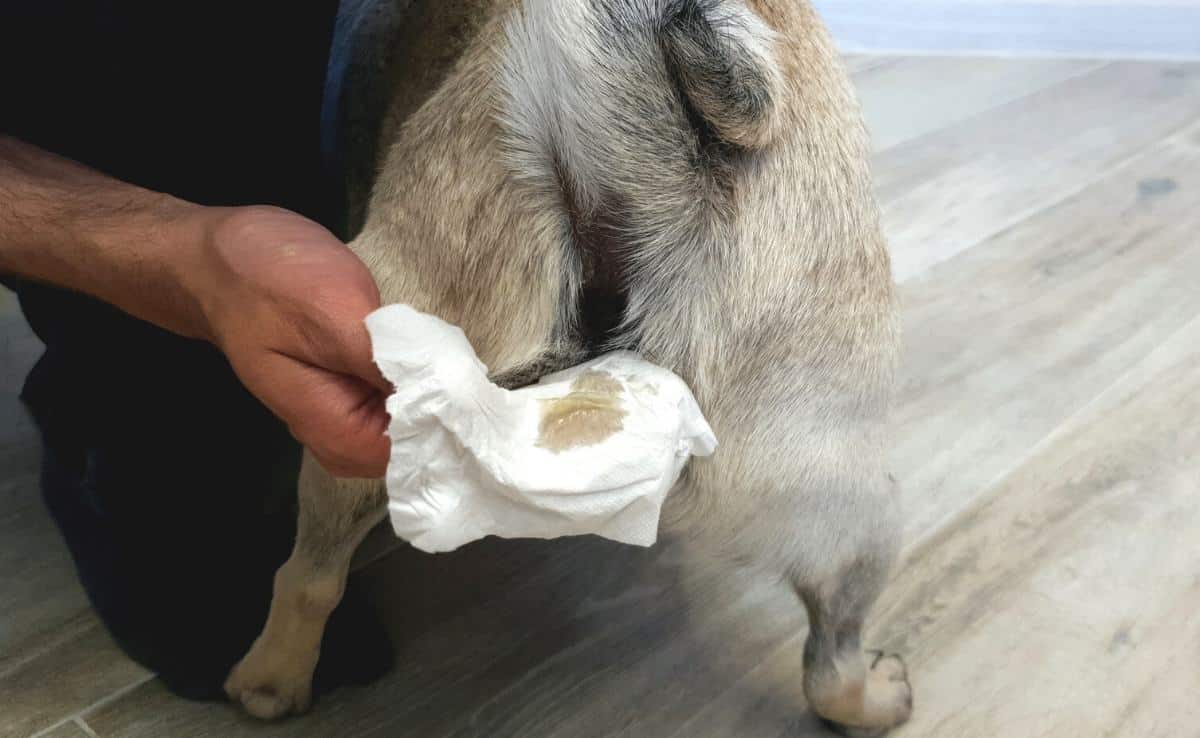
Long-Term Home Remedies For Dog Scooting
Here are five more home remedies for dog scooting behavior that offer long-term relief and help to reduce or prevent future occurrences.
5. Increase Water Intake
Hydration is crucial for your pup’s overall health and wellness, promoting regular and healthy bowel movements. Ensure they always have access to clean and fresh water. If your pup doesn’t drink as much water as they should, add a little water to their meals or offer them ice cubes.
6. Adjust Diet
To regulate bowel movements, consider changing your dog’s diet to a high-quality one, a diet for allergies , or one with a higher fiber intake. Some common dog food allergens include chicken, beef, wheat, and dairy. You could also try feeding your pup healthy vegetable or fruit snacks to increase their fiber intake, which can assist with normal anal gland secretion.
7. Add Supplements
Supplements such as probiotics and prebiotics support the digestive tract and help contribute towards firm and healthy stools. Omega-3 supplements, such as fish oil , help reduce inflammation and improve oil secretion in the skin, which can help with an itchy anal area. Whatever supplement you choose, always choose a high-quality supplement that targets the problem.
8. Deworm Every 3-4 Months
Deworming your dog at least three to four times a year is a sound practice for any responsible dog owner. Choose a broad-spectrum dewormer and treat them as advised. Keeping up to date with their deworming schedule reduces the risk of contracting worms. This way, if your dog starts scraping their butt on your carpet, you can more than likely eliminate worms being the cause.
9. Groom Regularly
For dogs that regularly scratch their butt or breeds with long hair, a sanitary clip is a great way to keep the area clean and hair-free to prevent future issues. In addition, soothing baths with gentle shampoo formulas or medicated shampoos prescribed by your vet can help remove irritants and relieve itchy skin.
Foods & Supplements For Anal Gland Problems

There are many high-fiber dog foods on the market, and most are advertised as weight-loss foods. Unless your vet recommends changing your dog’s diet completely, you can easily increase their fiber intake by adding vegetables, bran, or pumpkin to your dog’s diet. Fiber supplements, such as Glandex , can also help dogs with reoccurring anal problems.
We have found Glandex to be the most helpful for our dog. Ever since we started using Glandex daily, our 3-year-old dog Barley has been anal gland issue-free. This easy and healthy solution has been a true gift for us and would recommend it to anyone whose dog is experiencing this health concern. – Michelle Schenker , dog owner, licensed insurance professional, and writer at Canine Journal
Consult Your Vet About Dietary Changes & Supplements
When making adjustments to your doggo’s diet or thinking about adding supplements, it’s essential to speak to your vet. It might not be appropriate or the best course of action. So, for personalized dietary advice, please get in touch with your vet.
When To See A Vet
Scooting is your dog’s way of trying to fix something that is wrong. It might just be a one-off itch due to a dusty walk, and for this, a home remedy is great. But if you notice your pooch scooting a lot, licking or biting their rear end, or see swelling or any other abnormality, they need to see a vet immediately. It’s essential to get to the bottom of their scooting behavior.
A vet can decide if a dog needs topical ointment, medication to clear an infection or surgery. They can investigate and identify other causes of the scooting, such as anal gland impaction, infection, abscess, or cancer. They might suggest surgically removing the glands if the problem persists or is very serious. This delicate and potentially expensive procedure is only recommended in severe or persistent cases.
Call Your Vet ASAP
If you notice pus, bloody discharge, or a hole near the anus, your pup requires immediate medical attention.
Pet Insurance Covers Unexpected Vet Visits
Did you know pet insurance can help cover the cost of unexpected accidents and illnesses your dog experiences? We’ve reviewed the best pet insurance companies and shared pros, cons, discounts, our experience, and more with your insurance options.
Our Experience With Dog Scooting

Both our Cavalier King Charles Spaniel dogs had ongoing anal gland issues. Lexie our rescue girl, would scooch across the floor when her anal glands were full and needed to be emptied, which required visits to the vet every 6-8 weeks or so. Sometimes groomers would be able to externally empty them, but only a vet could internally empty them, which is more effective. Georgie, our male puppy, had ruptured anal glands twice, and he didn’t show any symptoms of scooting or licking until it was too late. The first time he wouldn’t stop biting his leg and butt area, and upon further inspection, we noticed a large, hard lump near his anus. We took him to the emergency vet, where they performed minor surgery to cut open the anal gland to remove the excess fluid and relieve the swollen area. The second time, the glands ruptured on their own, and there was a lot of bleeding around his bum and tail. We took him to the vet immediately, and they shaved the hair around the anus and cleaned out the infected gland with an alcohol-based cleaning solution. The vet also removed any excess fluid that was inside his glands. In each case, he was put on pain medication and antibiotics to prevent any further infection. They also recommend using a wet, warm compress to help with swelling and a follow-up visit with his regular vet within a week to make sure the area was healing properly. – Sadie Cornelius , Cavalier King Charles Spaniel parent , creative and content marketing for Canine Journal
Frequently Asked Questions
We know our readers still have many questions about why dogs scoot their butts and their health. If you don’t see yours below, ask about it in the comments , and we’ll find the answer.
Does Dog Scooting Mean Worms?
No, dog scooting doesn’t always mean they have worms. There are many causes of dog scooting behavior. It could be as simple as an itchy butt or something stuck on the hair around their anus. But regular scooting might suggest there is something wrong, such as worms. If you also notice worms in their poop or bedding, which often look like grains of rice, it’s probably the cause. It’s important to regularly deworm your pooch.
Can You Use Preparation H On Dogs?
Yes, you can use a small amount of Preparation H on your dog if their anal area is irritated and inflamed. Preparation H is an ointment that relieves the symptoms of both internal and external hemorrhoids. Only use a small amount on the area around their anus, not internally. In cases of inflammation, you must also take them to your vet for further investigation.
Can I Put Vaseline On My Dog’s Sore Bum?
Some owners use Vaseline (petroleum jelly) on their dog’s sore bottom. If you do, it must be free from additives and fragrance, as it could further irritate them. Apply a thin layer and monitor your pooch for any adverse reactions. Vaseline can provide some relief, but it is not a substitute for medical advice. Natural coconut oil is another option.
Learn How To Express Your Dog’s Anal Glands
If your pup occasionally experiences anal gland blockage and you need to express them, read our comprehensive guide on how to express your dog’s anal glands . Please remember that if they are not taken care of immediately, it can lead to severe infection or rupture.
Do you have a dog that booty scoots a lot? Maybe you’ve got experience or additional suggestions you’d like to share? Let us know in the comments below.
Why Trust Canine Journal?
Emma is a dog owner with over 20 years of experience. She has also worked as a professional dog walker and sitter for many years, caring for several dog breeds with different needs, including dog scooting. Emma dedicates countless hours researching the latest pet care, health, food, and training developments to keep her two best buddies and other doggy clients as happy and healthy as possible.
The information provided through this website should not be used to diagnose or treat a health problem or disease; it is not intended to offer any legal opinion or advice or a substitute for professional safety advice or professional care. Please consult your health care provider, attorney, or product manual for professional advice. Products and services reviewed are provided by third parties; we are not responsible in any way for them, nor do we guarantee their functionality, utility, safety, or reliability. Our content is for educational purposes only.
About The Author

Related Posts
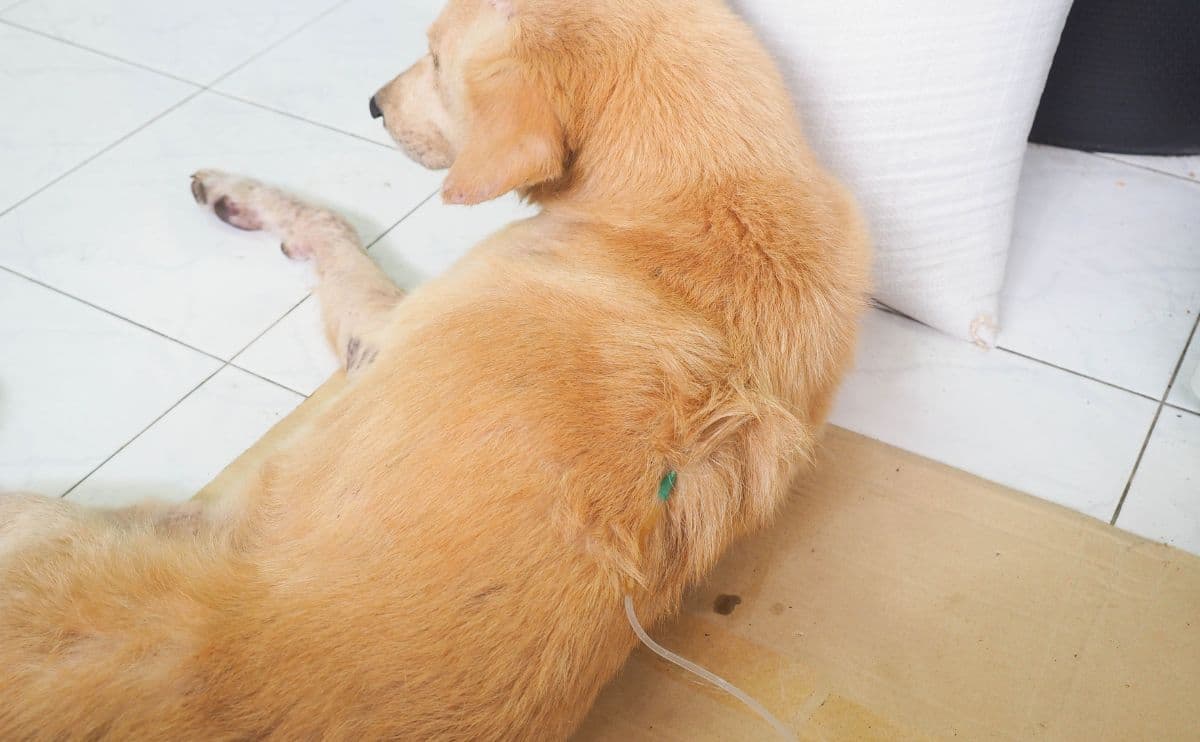
Kidney Failure In Dogs: Causes, Symptoms & Treatment Options
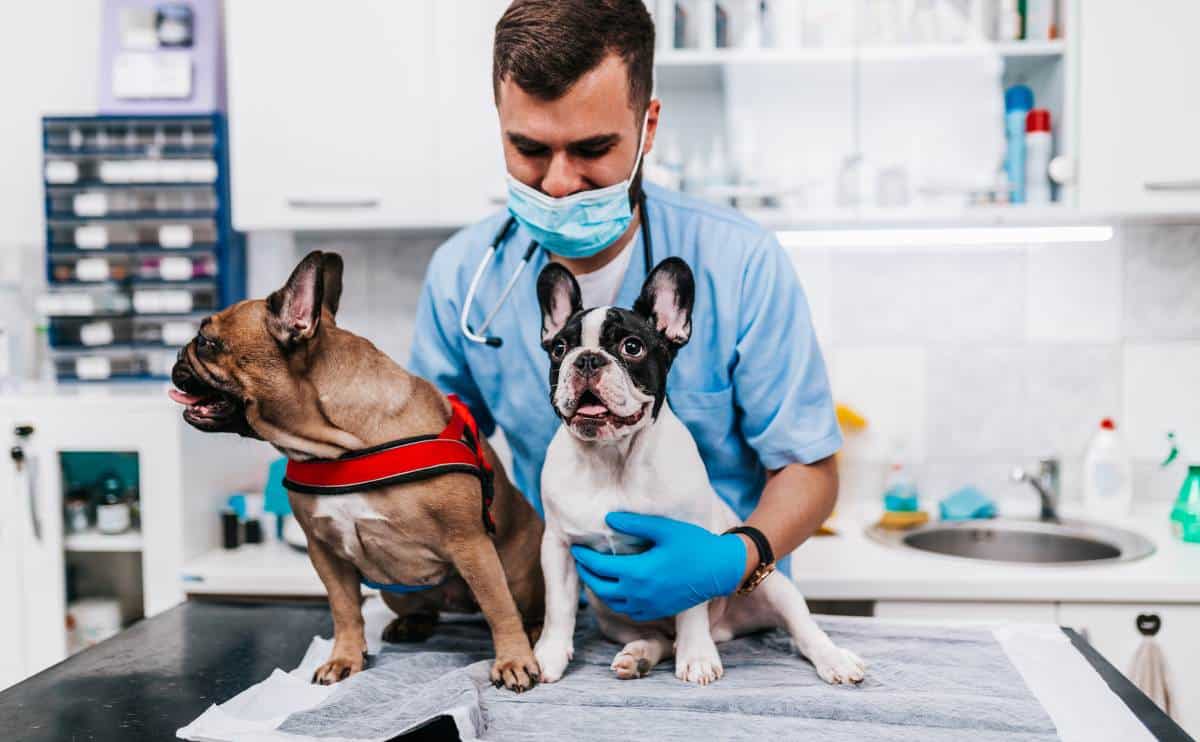
12 Common French Bulldog Health Issues
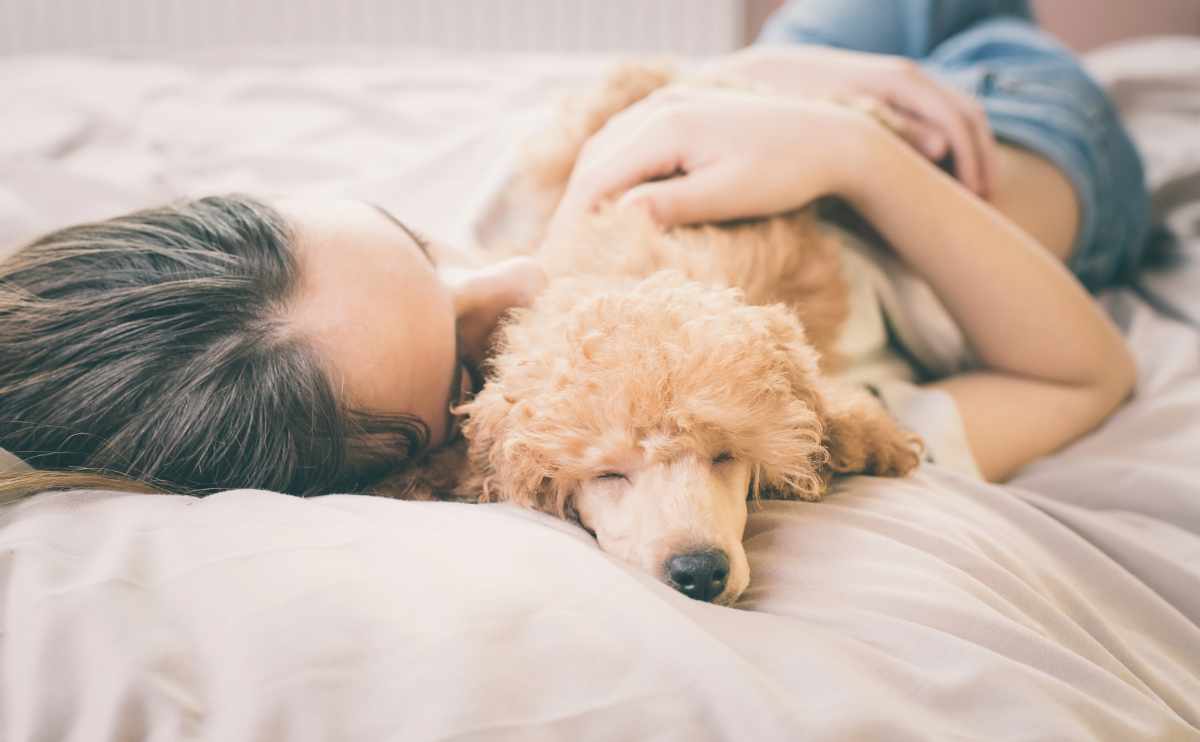
What To Give A Dog With Diarrhea: Home Remedies, Best Food Options & More
Low White Blood Cell Count in Dogs

Kanashi/iStock / Getty Images Plus via Getty Images
In This Article
What is neutropenia in dogs.
Neutrophils are white blood cells essential to a dog’s immune system. Produced in the bone marrow, these cells travel through the bloodstream to be first on the scene to sites of infection and inflammation. They will bind bacteria and viruses as well as signal for other white blood cells to come to the affected part of the body and help fight the infection.
Because neutrophils are the most common white blood cell, a significant decrease in neutrophil numbers (neutropenia) can leave dogs unable to resist infections. Low neutrophil counts can be due to decreased production in the bone marrow, increased use in the body, or abnormal destruction of the cells. Severe neutropenia in dogs is uncommon, but if it isn’t treated it can lead to serious health complications.
Low white blood cell count in dogs may be found on lab work in apparently healthy pups. Though these cases are not emergencies, they should be investigated and treated immediately if necessary to avoid potentially dangerous health issues. In other cases, severe lethargy and fever that require emergency care may be the first signs that something is wrong.
The survival of dogs with a low white blood cell count depends on how treatable the underlying cause is. Infections may respond easily to antibiotics with no chance for recurrence. Bone marrow abnormalities and cancers can be harder to manage and are more likely to be fatal.
Symptoms of Neutropenia in Dogs
Symptoms of low white blood cell count in dogs include:
Decreased appetite
Lethargy/weakness
Causes of Neutropenia in Dogs
Low white blood cell (neutrophil) counts in dogs can have several different causes, including:
Ehrlichiosis
Fungal infections
Medications
Chemotherapy
Thyroid medication ( methimazole )
Seizure medication ( phenobarbital )
Antibiotics ( sulfamethoxazole/trimethoprim )
Canine cyclic neutropenia ( gray Collies )
Hypovitaminosis B12 ( Giant Schnauzers )
Autoimmune Disorders
Immune-mediated neutropenia
Multiple myeloma
How Veterinarians Diagnose Neutropenia in Dogs
Low white blood cell count in dogs is usually confirmed on a complete blood count (CBC) test. In dogs, an abnormal count is fewer than 3,000 cells per microliter.
A small decrease may be normal in some dogs and not a concern. If there are no symptoms, your dog’s breed, age, and medical history (including medications, parasite preventatives , and vaccines ) will help your vet determine how serious the neutropenia is.
A physical exam, blood chemistry, urinalysis, X-rays, and abdominal ultrasound may help your vet determine the cause of neutropenia and how best to treat it. Your vet will often use these tests to look for infections or evidence of cancer.
Screening for blood and fecal parasites is important, especially in areas where tick-borne ehrlichiosis is common. Some cases may require a bone marrow biopsy to look for bone marrow cancers and abnormalities in how the body is producing these cells.
Treatment of Neutropenia in Dogs
Because the most common causes of low white blood cell count in dogs are infections and drug reactions , this syndrome is often treatable with antibiotics or discontinuation of the drug causing the issue. Complete remission can be expected.
Immune-mediated neutropenia also has a good prognosis, with most dogs returning to normal neutrophil counts within weeks after being administered immunosuppressive medications. Some dogs may require long-term medications for this disease.
Bone marrow cancers have a poorer prognosis, relying on chemotherapy for treatment, which can have its own bone marrow effects. While Giant Schnauzer neutropenia can usually be managed with lifelong vitamin B12 supplementation , Gray Collies born with cyclic neutropenia rarely live to be adults.
Recovery and Management of Neutropenia in Dogs
Treatable causes of low white blood cell counts in dogs respond quickly to therapy, and most dogs will feel much better within weeks of receiving treatment.
Severe infections like parvovirus may require intensive hospitalization. In many cases, treatment can be discontinued once cell numbers have normalized, though some immune-mediated conditions may require lifelong medications.
With aggressive care, some bone marrow cancers can go into remission and affected dogs can have good quality of life for months to years. Prognosis highly depends on response to treatment.
Prevention of Neutropenia in Dogs
Routine wellness blood work can help identify low white blood cell counts in dogs before they feel ill. Dogs on long-term medications that can cause neutropenia should have blood counts performed at least annually to monitor for neutropenia.
Vaccines and parasite prevention (such as NexGard ®, Bravecto ®, Seresto ®, or Simparica Trio ™) can go a long way in preventing severe infections that cause neutropenia.
Prompt care of wounds and appropriate antibiotic use can help avoid sepsis and antibiotic-resistant infections.
Neutropenia in Dogs FAQs
What is an alarming white blood cell count in dogs.
Abnormally low white blood cell counts in a dog are any value fewer than 3,000 cells per microliter on a complete blood count.
As the body has neutrophils that don’t travel in the bloodstream, how serious neutropenia is depends on more than just the number.
A vet will be more concerned if a very low value does not improve or if numbers decrease over time. Clinical signs such as fever or lethargy or decreases in the numbers of other cells will also indicate a more severe issue. Dogs with fewer than 2,000 cells per microliter are at significantly higher risk of infection.
How do you increase white blood cells in dogs?
White blood cell counts in dogs, unlike red blood cell counts, cannot be increased directly with transfusions or medications.
Improving low white blood cell counts in dogs requires treating the underlying condition, if possible. A dog’s ability to fight infection can sometimes be supported with antibiotics while the bone marrow works to create more neutrophils.
McManus P, Litwin C, Barber L. Immune-mediated neutropenia in 2 dogs . Journal of Veterinary Internal Medicine . 1999;13:372-374.

Veterinarian
Dr. Jamie Lovejoy graduated from Tufts Cummings School of Veterinary Medicine in 2012 after an undergraduate degree in Marine Biology. ...
Help us make PetMD better
Was this article helpful?
Related Articles

Subscribe to Our Newsletter
Sign up for weekly pet health tips and insights from our veterinarians.
Watch CBS News
How does the solar eclipse affect animals? Veterinarians share insights and pet safety tips
By Aliza Chasan
Updated on: April 8, 2024 / 4:54 PM EDT / CBS News
With around 180 million people living in or near the 2024 solar eclipse path of totality, many pet owners have been wondering how the eclipse may impact animal behaviors and how their pets might react.
Veterinarians said they've been fielding questions from some concerned pet owners about the eclipse's impact on animals. Ultimately, there isn't a clear answer for pet owners because eclipses happen so infrequently. Researchers did plan to watch animal reactions during the April 8 eclipse to learn more about how it affects animals.
"There's not a lot of scientific research done on this topic of animals and eclipses mostly because they don't come often," said American Kennel Club Chief Veterinary Officer Dr. Jerry Klein. "And a lot of it's just been anecdotal reports and just volunteering information."
How does a solar eclipse affect animals?
Though there isn't a lot of information out there, veterinarians and animal researchers do have some idea how the eclipse may impact dogs, cats and more.
"Most animals will be overall unaffected by the eclipse, but pet owners may notice brief periods of confusion, and dogs and cats may exhibit fear and confusion," said Dr. Katie Krebs, a veterinarian and professor at University of Pennsylvania's School of Veterinary Medicine.
Pets may hide, howl, pace or pant during the eclipse, Krebs said. As the sky darkens, some pets may start their nighttime routine early.
The average indoor dog or cat is likely not going to be affected by the eclipse, said Dr. Rebecca Greenstein, veterinary expert with pet care company Rover.
"So owners should take heart and take comfort in knowing that," Greenstein said.
Why do solar eclipses affect animals?
It's not so much the eclipse that affects pets, but the behavior of people, Klein said.
"They'll take their cues from us," Klein said. "So if they're kept indoors and we don't try to force them into a situation that's peculiar, there should be minimal to none as far as reactions."
Many people will gather at eclipse parties and those large gatherings can impact pets if they're brought along, Klein said. The travel, noise and crowds can be stressful for animals.
Some animals that depend more on the light-dark cycle, like birds, may be more affected because the sky will darken during the eclipse, Krebs said.
"Things like fireworks and thunderstorms are probably a much more significant phenomenon than an eclipse that's lasting only a few minutes," Greenstein said.
Can animals look at the eclipse without going blind?
Animals generally know not to stare at the sun themselves — they've learned that doing so can temporarily blind them, leaving them vulnerable.
"Dogs know that if something hurts them, they probably shouldn't do it," said Klein. "So left to their own devices, dogs are probably not going to stare at the sun."
Pets may look up if they see the people around them are preoccupied with looking up at the sky, vets said.
"Dogs follow your cues, so if you're preoccupied with looking up, your dog is looking to your cues to figure out how to behave," Greenstein said. "So this may be a time to either not bring them along, or if you are, to reassure them with their favorite toy or treat and just keep them preoccupied with what's going on at ground level."

Pet owners do not need special eclipse glasses for their dog or cat, Krebs said.
If you have a pair of eclipse glasses around, be careful not to leave them unattended with your pet, who may chew on or eat them, Klein said. Eclipse glasses that have scratches or punctures should not be used.
Should you keep your pets inside or outside during the solar eclipse?
Veterinarians agree that it's likely best to keep pets inside during the eclipse, especially if they're stressed by crowds or events like storms or fireworks.
"If possible, keep them indoors in a comfortable environment where they will feel more secure because the feeling of this is probably the most important thing," Klein said.
Owners planning to go to eclipse events should be respectful of their pet's boundaries.
"Not all animals do well with large crowds or with you being distracted with other things, so leaving them at home or calling a trusted pet sitter are probably the best bet," Greenstein said.
At home, owners can try distracting a pet with a favorite toy, vets said. Pets who are often anxious may benefit from anti-anxiety medication during the eclipse, but owners should check with their veterinarian for specifics before giving their dog or cat any medication, Krebs said.
"If you plan to stay home during the eclipse, your pet may seek out extra attention or comfort, so providing them with extra comfort and reassurance may help," Krebs said.
More pet safety tips to keep in mind
If you've decided to take your dog to an eclipse event, it's important to make sure they're microchipped with current info in case they get stressed and run away, Klein said. While there, make sure they're well controlled on a leash.
"By and large, we're not thinking this represents any major danger, but definitely pet owners should use their judgment," Greenstein said.
Aliza Chasan is a digital producer at 60 Minutes and CBSNews.com. She has previously written for outlets including PIX11 News, The New York Daily News, Inside Edition and DNAinfo. Aliza covers trending news, often focusing on crime and politics.
More from CBS News

Zoo animals got quiet, exhibited nighttime behavior during total solar eclipse

Solar eclipse maps show 2024 totality path, peak times across the U.S.

Bill Nye shares tips for eclipse: "Be in the moment"

See the list of notable total solar eclipses in the U.S. since 1778
BREAKING: Missouri executes Brian Dorsey for killing his cousin and her husband, despite prison staffers' attempts to save his life
Instacart driver fatally shoots dog belonging to actor Angie Harmon

Actor Angie Harmon, known for roles on "Law & Order" and "Rizolli & Isles," said Monday that an Instacart driver fatally shot one of her dogs during a weekend stop at her home.
Charlotte-Mecklenburg, North Carolina, police confirmed elements of her story, saying in a statement that no arrests have been made, no charges have been recommended, and further witnesses will not be sought.
The police department said the driver told officers that the dog attacked him when he arrived at Harmon's home on the southern side of Charlotte shortly before noon Saturday and that he fired one shot in self-defense.
“Another dog was present at the residence but did not attack,” police said.
The driver was at the residence to deliver "consumable goods," according to police.
Instacart said in a statement that it suspended the driver and reached out to Harmon's household and that it is cooperating with police.
"We were deeply saddened and disturbed to hear about this incident," the company said. "We have no tolerance for violence of any kind."
Harmon, 51, said Monday on Instagram that she was home with her daughters when the dog, Oliver, was shot.
"He got out of his car, delivered the food & THEN shot our dog," she said. "Our [Ring] camera was charging in the house, which he saw & then knew he wasn’t being recorded. The police let him go b/c he claimed 'self defense'. He did not have a scratch or bite on him nor were his pants torn."
Harmon actor, winner of two People's Choice awards for her work on cable television, said the driver was nonchalant even as the family was left "devastated."
She said she recalls the man saying after the shooting: "Yeah, I shot your dog. Yeah I did."
Harmon has previously described the dog as a German shepherd.
The driver's identity has not been released.
Colin Sheeley is an assignment editor for NBC News.
Dennis Romero is a breaking news reporter for NBC News Digital.
- Skip to main content
- Keyboard shortcuts for audio player

Solar eclipse 2024: Follow the path of totality
Solar eclipse, how to keep pets safe during the solar eclipse, whether at home or on the road.
Rachel Treisman

A dog tries on eclipse sunglasses in London in 2015. Experts say pets don't need eclipse sunglasses — in fact, quite the opposite. Kirsty Wigglesworth/AP hide caption
A dog tries on eclipse sunglasses in London in 2015. Experts say pets don't need eclipse sunglasses — in fact, quite the opposite.
The solar eclipse is a can't-miss event for millions of Americans, whether or not they'll be viewing it from the path of totality . But what does it mean for our many furry friends?
Dr. Rena Carlson, the president of the American Veterinary Medical Association, got a firsthand view of how animals responded to the total eclipse in 2017.
Her veterinary practice, in Pocatello, Idaho, closed down for several minutes so staff members could watch the eclipse outside, along with many of their dogs.

What you need to know to watch Monday's total solar eclipse
"Honestly, the animals were probably more anxious because of our excitement than anything else," she remembers.
Carlson says while certain dogs may exhibit some of the behaviors they normally do when it starts to get dark outside, the eclipse is unlikely to directly affect pets in a significant way.
But things like crowds and traffic can, which is why experts recommend leaving animals at home to be safe.
Carlson says there are steps that their humans should take to look out for them on such a hectic day — especially if anyone involved is traveling .

Thinking of taking a last-minute drive to see the eclipse? Here's what to know
"My bigger worry is there was so much traffic and so many people coming through our area that a drive [that] typically would take us two hours took over eight to 10 hours," Carlson says. "So if you're traveling with your dog, please be prepared for long wait times."
Here are some expert tips for protecting your pet during the eclipse, whether they're right in the thick of it or waiting for you at home.
Consider: Should Fido come or stay?
The first step is to decide whether your pet even needs to come with you for outdoor eclipse viewing, whether it's close to home or out of town.
Most of the time, Carlson says, the answer is no.
"It's quite an amazing phenomenon for us to experience," she explains. "And so that can be pretty stressful when dogs are with large crowds and a lot of noise, they don't quite understand the excitement. They're going to be much more nervous about 'What's going on?' and 'How should I react?' "
She says the same guidance applies to all pets, even though cats and birds are not as likely to be traveling in the first place.
"They're going to be better off at home, in their normal environment," she adds.
Prepare for commotion and contingencies if you're traveling
If you do decide to bring your dog, plan ahead for what to do if things get overwhelming.
That includes bringing extra food and water in case the journey takes longer than expected, and getting them out of the car for walks or bathroom breaks if you're stuck in traffic.
Once you're at your destination, Carlson says, "always be thinking about" how to keep your pet safe and comfortable. Keep them on their leash, make sure they're hydrated and pay attention to their body language.

For April's eclipse, going from 'meh' to 'OMG' might mean just driving across town
"You know your pets' behaviors better than anybody else," she says. "And so watch for any kind of a change in how they're reacting."
Signs of distress may include panting, pacing and whining. If you notice any of these behaviors, Carlson advises removing your pet from the situation as soon as possible, because "the more worked up they become, the harder it is to calm them down."
"I know there's a lot of activity going on and there's a lot of things to see, and excitement," she adds. "But if you have ... a pet with you, make sure you're really paying attention to them and watching their signs of stress so that you can respond appropriately."

How to make the most of next week's solar eclipse
If you're traveling sans pets, make sure there's someone back home you can call to feed and let them out while you're away, especially if there's a chance you may get home later than normal.
The ASPCA recommends keeping pets busy with a food puzzle toy or other form of enrichment while you're away. But Carlson says not to worry more than usual about leaving your pet alone that day.
"They're not going to be worried about the eclipse happening," she says. "They're just going to think it's a normal day where you're gone."
Don't waste your eclipse glasses on your pet
Any human who plans to look directly at the eclipse needs to wear special sunglasses , except for those few brief minutes when the moon is fully blocking the sun. Pets, however, do not.
"They're outside every day and don't look up at the sun, so there's no reason to think they're going to do that at this point," Carlson explains.
In fact, trying to put glasses on your pet — even for a photo opp — could likely do more harm than good, Carlson says. It could stress dogs, leading them to paw them off and even chew them up.

Why watching the 2024 total solar eclipse might change your life
"Keep the glasses for yourself, because we're the ones that are going to be looking up at the sun and need that protection for our eyes," she says. "They're just going to be looking around like they normally do every day and feeding off of your emotions and your excitement."
Dr. Lori Bierbrier, the senior medical director of ASPCA Community Medicine, told NPR over email that while it's unlikely that animals will look right at the sun, their eyes could be damaged if they do so long enough.
Symptoms of eye damage include squinting, closing one eye or pawing at their eyes, redness, inflammation or cloudiness and watery eyes or discharge. She recommends contacting your vet as soon as you notice them.

Everything you need to know about solar eclipse glasses before April 8
But what about vet offices that are closed for the eclipse — as Carlson's briefly was — or hard to get to on the day of the eclipse?
Carlson says you should be aware of heavy traffic and figure out back roads you can take.
Ideally, worried pet owners could call their vet to explain the situation and get advice first. Carlson says that's just one example of why strong client-patient relationships are so important.
"Whether there's an eclipse or not," she says, "emergencies happen."
More resources to enjoy the eclipse
- Sharing the eclipse with tiny humans? Check out these kid-friendly total solar eclipse learning guides from Vermont Public's But Why, and this great explainer from KERA Kids on the difference between a solar and a lunar eclipse .
- Feeling whimsical? Here are three ways to sprinkle a little magic into your eclipse experience .
- Plan to wander into the wild for the best view? Here are some tips from outdoor experts.
- Tips from Bill Nye on the best ways to enjoy the eclipse.
NPR will be sharing highlights here from across the NPR Network throughout the day Monday if you're unable to get out and see it in real time.
- total solar eclipse
- 2024 eclipse
- animal safety

How to Dilute Tea Tree Oil for Dogs
W hile essential oils may seem relatively harmless, many of them actually have the potential to be highly toxic to our furry friends. A large number of owners turn to more natural remedies when keen to treat their pet from home. However, is this always the safest option?
Having seen cases of skin irritation and toxicity caused by essential oils include tea tree oil, as a vet, I am reluctant to advise it as a therapy option. Undiluted tea tree oil is the most toxic, but even diluted oil can carry certain risks.
Is tea tree oil for dogs safe?
Image credits: Alex Navarro .
As tea tree oil is toxic to dogs, we must make owners aware of the potential dangers associated with its use. When concentrated, even a few drops of tea tree oil have the potential to cause serious issues. In the worst case scenario, not diluting the oil before using it can even lead to the death of a pet.
When diluted correctly, tea tree oil can be safely used. This means concentrations of 1-2% or less. You must always dilute the oil, as it is often sold neat and undiluted.
Can I put diluted tea tree oil on my dog?
You can potentially put tea tree oil on your dog as long as it has been sufficiently diluted. Before putting any oil on your dog, do confirm with their vet that it is a good option for them and is not contra-indicated due to any underlying medical issues they may have.
Owners may choose to rub or spray it on, depending on the issue they are treating. It is important the dog cannot lick the oil off, as this oil is not for ingestion.
How do you make tea tree oil spray for dogs?
Some owners find it easier to apply when in spray form. We can add a drop of tea tree oil to a spray bottle and then dilute it using water, apple cider vinegar or a carrier oil like coconut oil. One drop of oil should be added to 100-300mls of solution. Putting undiluted tea tree oil on your dog can lead to serious toxicity.
It is advised that owners always do a ‘patch test’ before applying the diluted oil to large areas of the body. This should be a patch of skin that you can monitor easily for any signs such as itching, redness or swelling. If the spray you’ve made does irritate or inflame the patch of skin within 24 hours, no more should be used as the dog may be allergic.
Is diluted tea tree oil safe for dogs?
In general, as long as tea tree oil has been sufficiently diluted and is applied to the skin, it is safe. However, it may not be the best treatment. Keep in mind that allergic skin disease and established skin and ear infections may not respond at all to the application of tea tree oil, and its application could delay your dog getting the veterinary care they need.
If your dog has an ear infection, we should not put the oil inside their ear canal. The tissue inside the ear is very sensitive and this could cause discomfort. Also, if the eardrum has ruptured, we would not want to be putting any essential oils nearby.
What can you use tea tree oil for?
Natural and holistic vets may advise diluted tea tree oil is used for certain skin conditions such as mild, localized yeast and bacterial infections. This can include fungal claw infections.
You may have also read that it can be used to prevent and treat flea infestations but, in practice, I have not found it to be effective for this. For parasite prevention, it is best to stick to those products recommended by your dog’s vet.
What are the benefits of tea tree oil?
Image credits: unsplash.com.
Scientifically, we know that tea tree oil does have medicinal properties. It has been widely used in human traditional medicine for many years. It has been touted as a promoter of wound healing and has both anti-fungal and anti-bacterial properties. Some owners find it useful to reduce itching, at least anecdotally.
I’ve encountered a number of pet parents who will use tea tree essential oil to try and treat hot spots (patches of acute moist dermatitis). While it can help reduce bacteria levels on the surface of the skin, most dogs with an established infection like this would also need prescription medicine including antibiotics and pain relief.
What are the signs of tea tree oil toxicity in dogs?
Signs of tea tree oil toxicity can come on quickly and are variable. Signs we encounter include:
- Ataxia (wobbly walking)
- Drooling, nausea and vomiting
- Hypothermia (low body temperature)
- Weakness and confusion
- Muscle tremors
- Increased liver enzymes
- Stupor and coma
Signs generally start just a few hours after ingestion, though may take up to 8 hours to present. Generally, the larger amount of tea tree oil your dog has been exposed to, the quicker we can expect to see signs.
Do vets recommend owners put tea tree oil on dogs?
In general, there will be safer and more effective treatment options available, which your vet will likely steer you towards. While tea tree oil is natural and can be safe when properly diluted, it is generally not as quick to work or as efficacious as other medicine we have at out disposal.
I personally may recommend a tea tree oil shampoo for a subset of patients, particularly if they are prone to yeast overgrowth on their skin.
What tea tree oil products are available for pets?
There are a range of products which can be purchased that contain tea tree oil including shampoos, hot spot sprays, balms and oils. These will be available over the counter from places like pet shops, as well as online.
Owners can also make their own diluted solution, if they feel confident in doing so and have already got some tea tree oil. They must always dilute tea tree oil before its use.
What about melaleuca oil?
Melaleuca is simply an alternative name to tea tree. They are the same thing as the tea tree is also known as ‘Melaleuca alternifolia’.
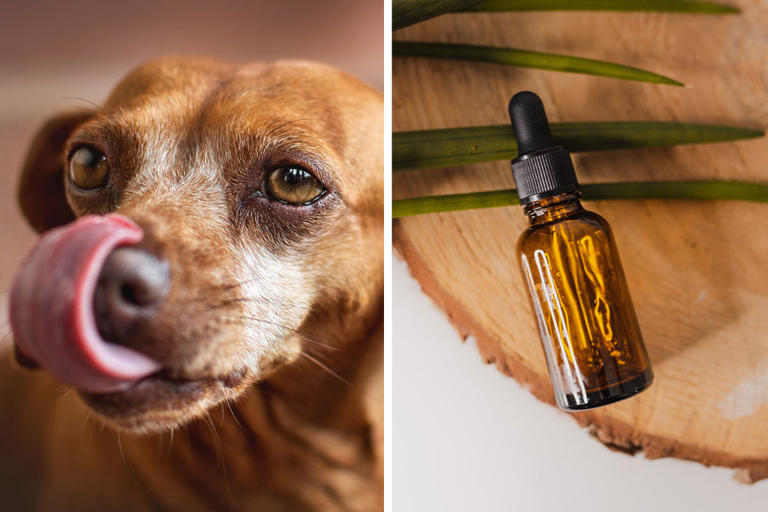

IMAGES
COMMENTS
Benefits for Pets. 1. Less stress and anxiety; ideal for senior pets and multi-pet households. 2. Reduced risk of contagious diseases and improved accuracy in diagnosis. 3. Mobile vet care is more personalized and provides a peaceful environment.
Veterinary home visits are great for many reasons. If you have a shy or nervous dog that is easily stressed, a home visit can reduce that anxiety by allowing your dog to stay in a familiar place ...
Common Services Offered by Mobile Veterinarians. Mobile veterinary services typically offer everything that a standard veterinary clinic would provide, including exams, dental checkups, and diagnostic testing, but within the comfort of your home.. Many mobile veterinarians can also provide individualized care for aging or sick pets and pets with chronic health conditions or other special ...
Founded in 2021 in Miami, The Vets now offers in-home personalized vet care for dogs and cats in 18 major metropolitan locations (covering over 240 cities) across the U.S. Their licensed veterinarians provide high-quality clinical care in the comfort of your home. Services include wellness exams, vaccinations, sick visits, home lab tests ...
Our medical teams will work with you in building a balanced nutrition plan customized to the pet's lifestyle, health, and overall well-being. Schedule an Appointment. The Vets are Fear Free® certified . Keeping your pets calm and creating a positive experience during routine exams is better for everyone.
Published: September 2nd, 2015. Home visits are often part of the dog adoption process. And you want to be ready when they visit your home - that's why Kevin Roberts will walk you through the home visit procedure. "Hello! I am here for your home visit!". If you're adopting a dog, you might be greeted by these words from a stranger at ...
At other times, it might be better to have the vet come to your home, like at the end of your pet's life. The solution to those, and other problems, could be a mobile, or housecall, veterinarian ...
Conclusion. In-house vet visits can provide a wide range of veterinary services from the comfort of your home and can make life a lot easier for both you and your pets. Many pet owners also choose house call vets to help their pet through difficult times such as palliative care or to make euthanasia a more peaceful experience.
2. Designate a Safe Place. Choose a quiet and familiar space in your home for the veterinarian's visit. This could be your living room, a spacious bedroom, or any area your pet feels relaxed in. Make sure that the area is clear so that there is room for the veterinarian to examine your pet as well as no hiding places.
Do vets do home visits? In short, yes. If you ring a vet practice and ask for a home visit, they will often be able to arrange a mutually convenient time to come out to you. We can all appreciate the desire to have your veterinarian visit you at home instead of having to find the time to take your pet to the clinic.
At times like this, our capable and compassionate veterinary teams often offer at home visits. In general, we recommend you visit a comprehensively equipped and staffed practice near you if your pet is ill. However, we do understand there are occasions where this might not be possible. To help make life less stressful for everyone, we offer ...
Book a home vet visit today. Schedule an Appointment. From wellness exams to sick care, we've got you covered with mobile veterinary services near you. Book an appointment with The Vets and get stress-free pet care in the comfort of your own home.
Euthanizing Pets at Home. In-home euthanasia has now become an option in most cities. This provides a way to say goodbye to your pet in a comfortable and private setting. Letting your pet go at home can allow your family and other pets to say their goodbyes in their own time and space.
Before the actual veterinary visit, take your dog for a walk to expend a little excess energy. Gather a stool sample in a plastic bag if he has a bowel movement on your walk. After checking in with the receptionist, sit in a quiet area of the waiting room (if there is one) and speak to your dog in a calm reassuring voice.
Age. Age plays a huge role in the frequency of your vet visits each year. If you adopt a puppy, you'll get used to going to the vet regularly.Experts recommend monthly wellness exams during early puppyhood — typically once every 3-4 weeks until they're 16 weeks old, following a basic vaccine schedule.. During puppy wellness visits, the vet will examine them to make sure they're ...
We offer personalized home visits in Glendale, AZ. A concierge fee (home visit travel fee) of $199 applies to each home visit, regardless of the number of pets. Additionally, an exam fee of $99 will be charged for each pet that we examine during the visit. The total cost of the at-home visit will change depending on the services required and ...
The vet will examine your dog's face and head to look for asymmetry, lumps, bumps, and other abnormalities. She'll also check the eyes, ears, and nose for discharge or anything else unusual. Using a tool with a special light called an ophthalmoscope, the vet will check the structures inside the eye.
Give them a calming place to reorient themselves and recover. Use a pheromone diffuser to help your new puppy feel at ease. If veterinarian-approved, feed your dog a meal or play with them. If your dog has just been spayed or neutered, be sure to make the first 48 hours very light on activity.
Basic pet care and treatment procedures - our house call vet can visit your pet to see how he is doing and if he needs further vet treatment. Our mobile vets have the basic tools, medicines, and other pet supplies for primary pet care. Emergency pet care - like emergency medical responders our vets can rush to your home in case your pet ...
Do in-home visits from veterinarians keep pets calmer? Here's what a Topeka expert says. Using an in-home veterinarian was the best choice Stephanie Stuart made two years ago when it came to ...
These include: Ultrasound scans. X-rays. Surgery. Administration of intravenous fluid. Chemotherapy and radiation treatments. Dentistry. Whatever your cause for concern, if you need help and advice from your vet, get in touch with your local veterinary and pet care clinic today, to ask about booking a home visit.
Stay in close communication with your veterinarian for guidance to avoid prolonging serious pain or suffering of your pet. Try to extend your pet's life length as much as possible - this strategy often results in emergency veterinary visits (inevitably in the middle of the night) to euthanize.
Increase Water Intake. Hydration is crucial for your pup's overall health and wellness, promoting regular and healthy bowel movements. Ensure they always have access to clean and fresh water. If your pup doesn't drink as much water as they should, add a little water to their meals or offer them ice cubes. 6.
In dogs, an abnormal count is fewer than 3,000 cells per microliter. A small decrease may be normal in some dogs and not a concern. If there are no symptoms, your dog's breed, age, and medical history (including medications, parasite preventatives, and vaccines) will help your vet determine how serious the neutropenia is.
At home, owners can try distracting a pet with a favorite toy, vets said. Pets who are often anxious may benefit from anti-anxiety medication during the eclipse, but owners should check with their ...
Your canine companion deserves the best — shop the best dry dog food of 2024 to keep your dog satisfied and healthy, no matter their size. IE 11 is not supported. For an optimal experience visit ...
Actor Angie Harmon, known for roles on "Law & Order" and "Rizolli & Isles," said Monday that an Instacart driver fatally shot one of her dogs during a weekend stop at her home.
Carlson says while certain dogs may exhibit some of the behaviors they normally do when it starts to get dark outside, the eclipse is unlikely to directly affect pets in a significant way.
Weakness and confusion. Muscle tremors. Increased liver enzymes. Stupor and coma. Death. The post How to Dilute Tea Tree Oil for Dogs first appeared on Bored Panda. While essential oils may seem ...